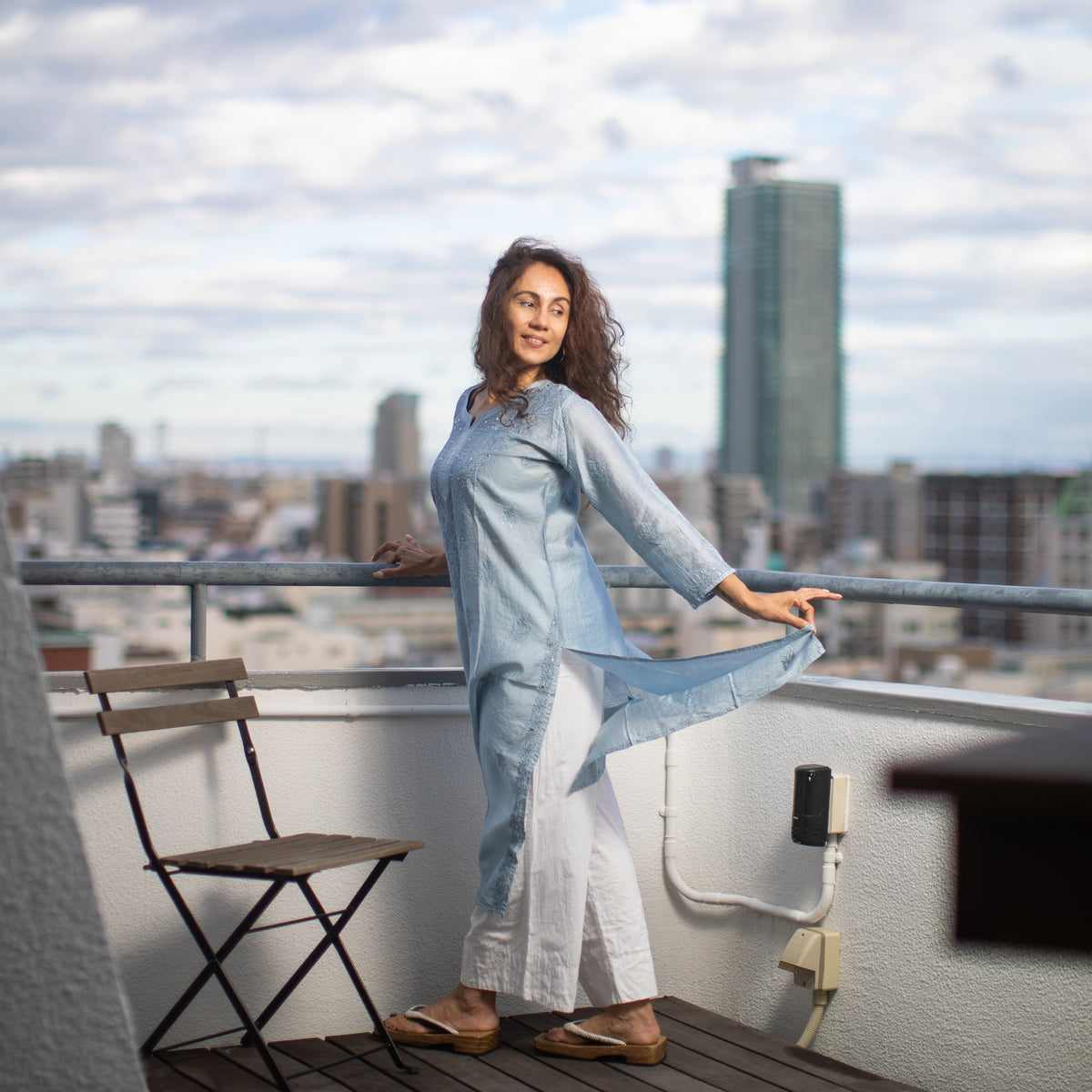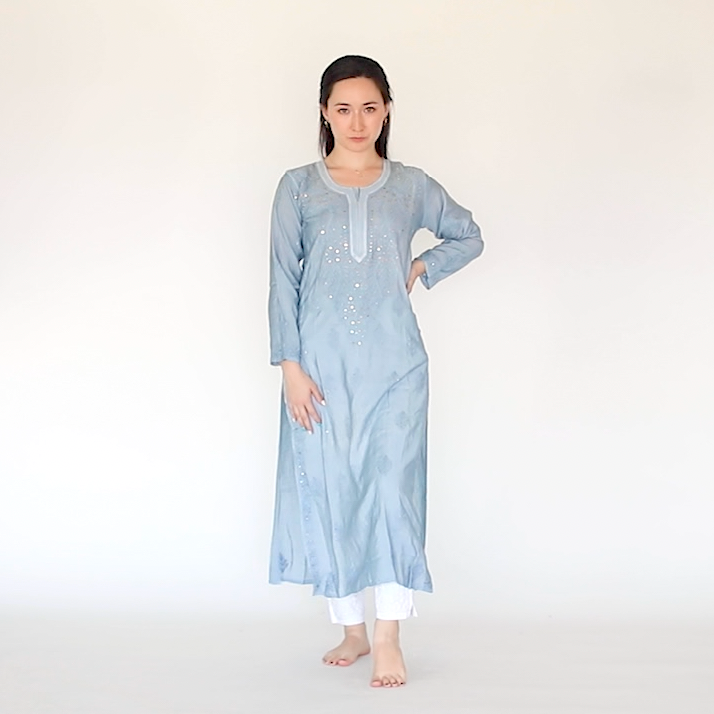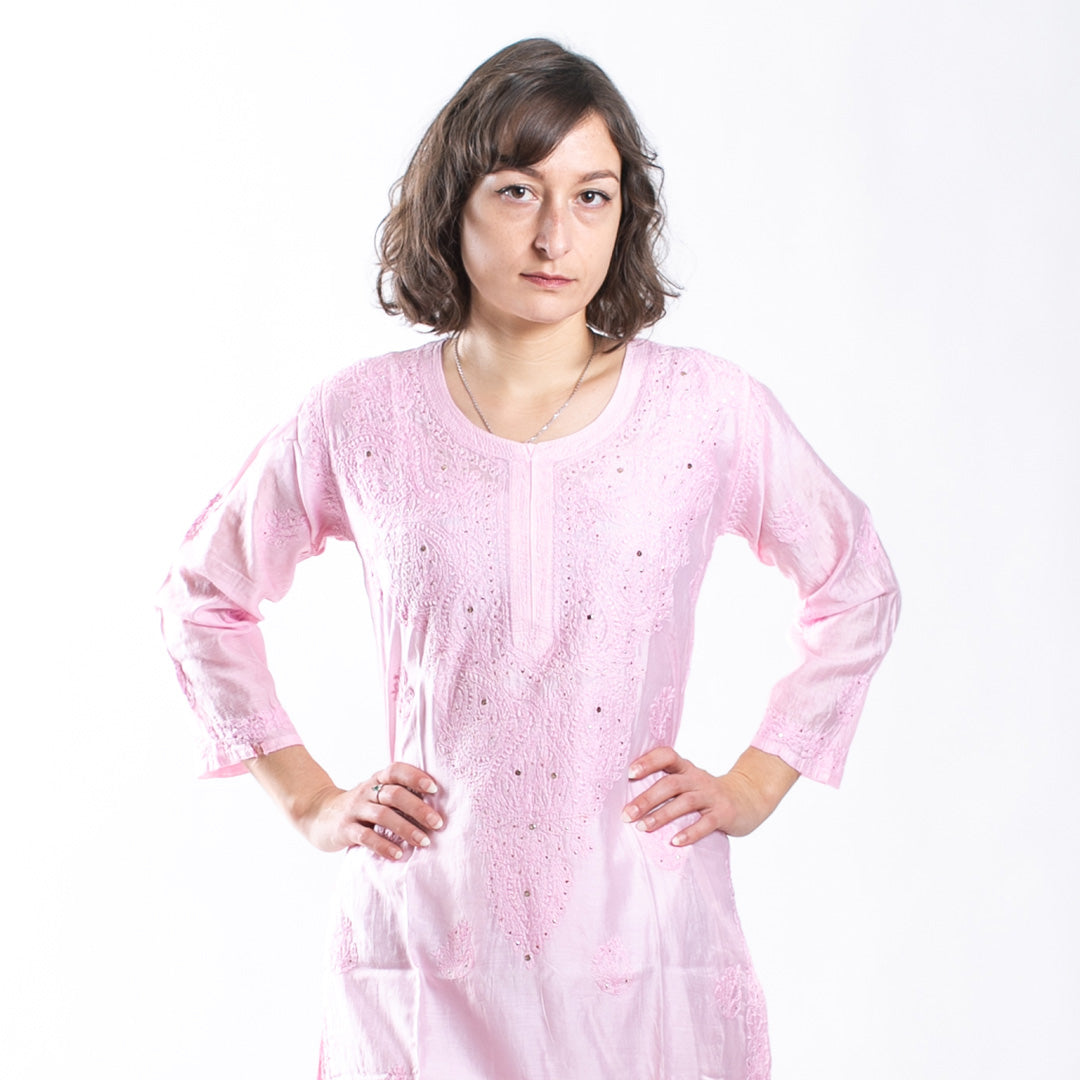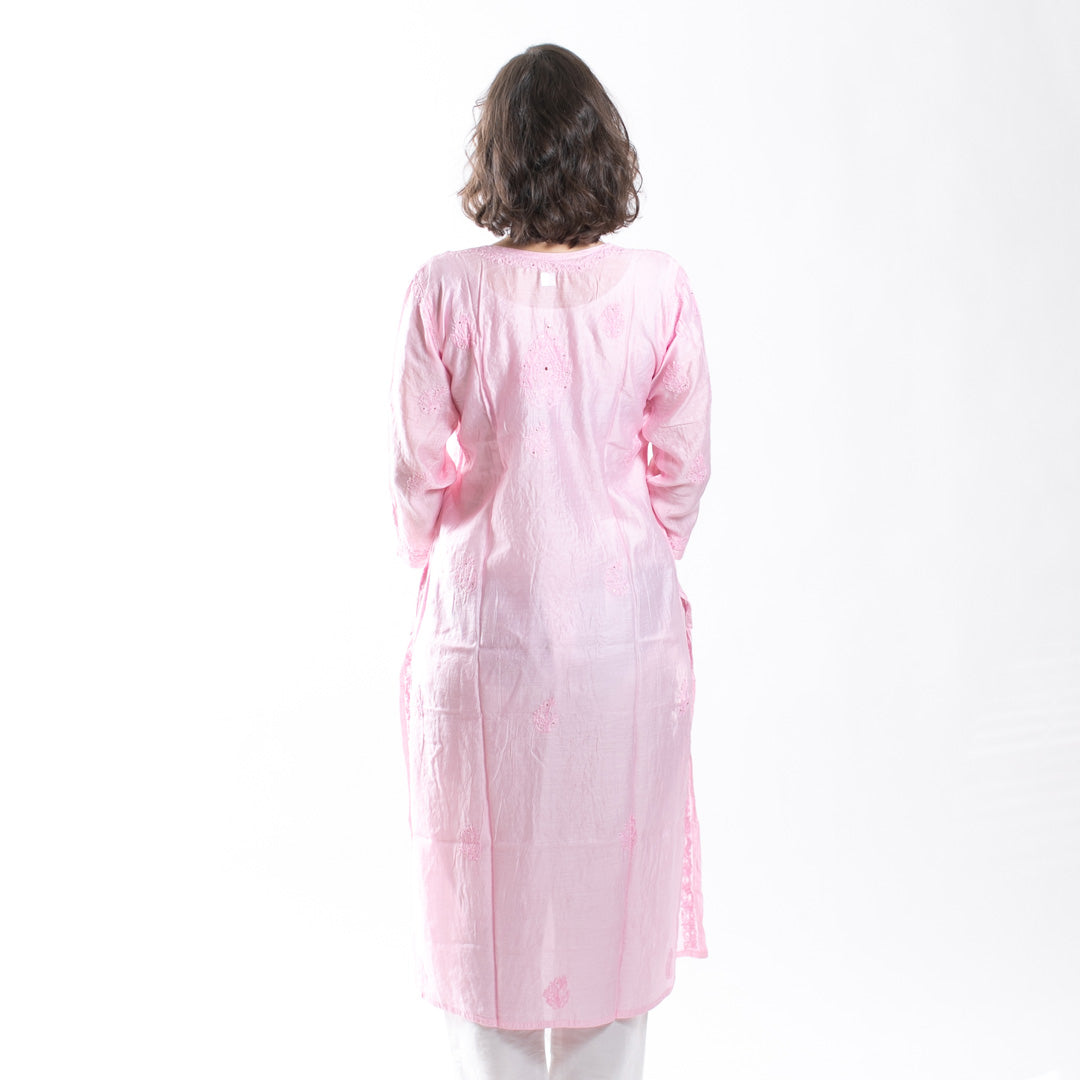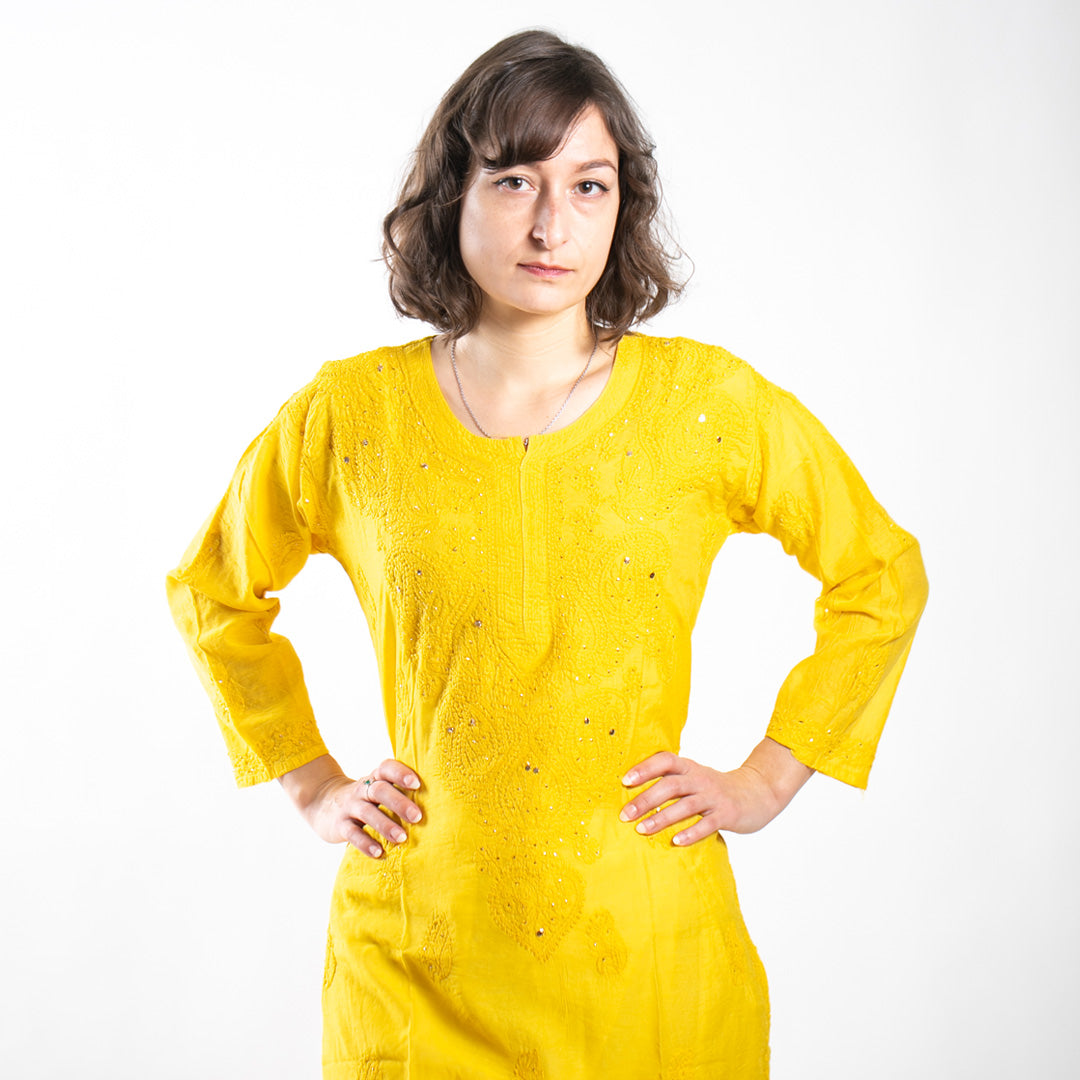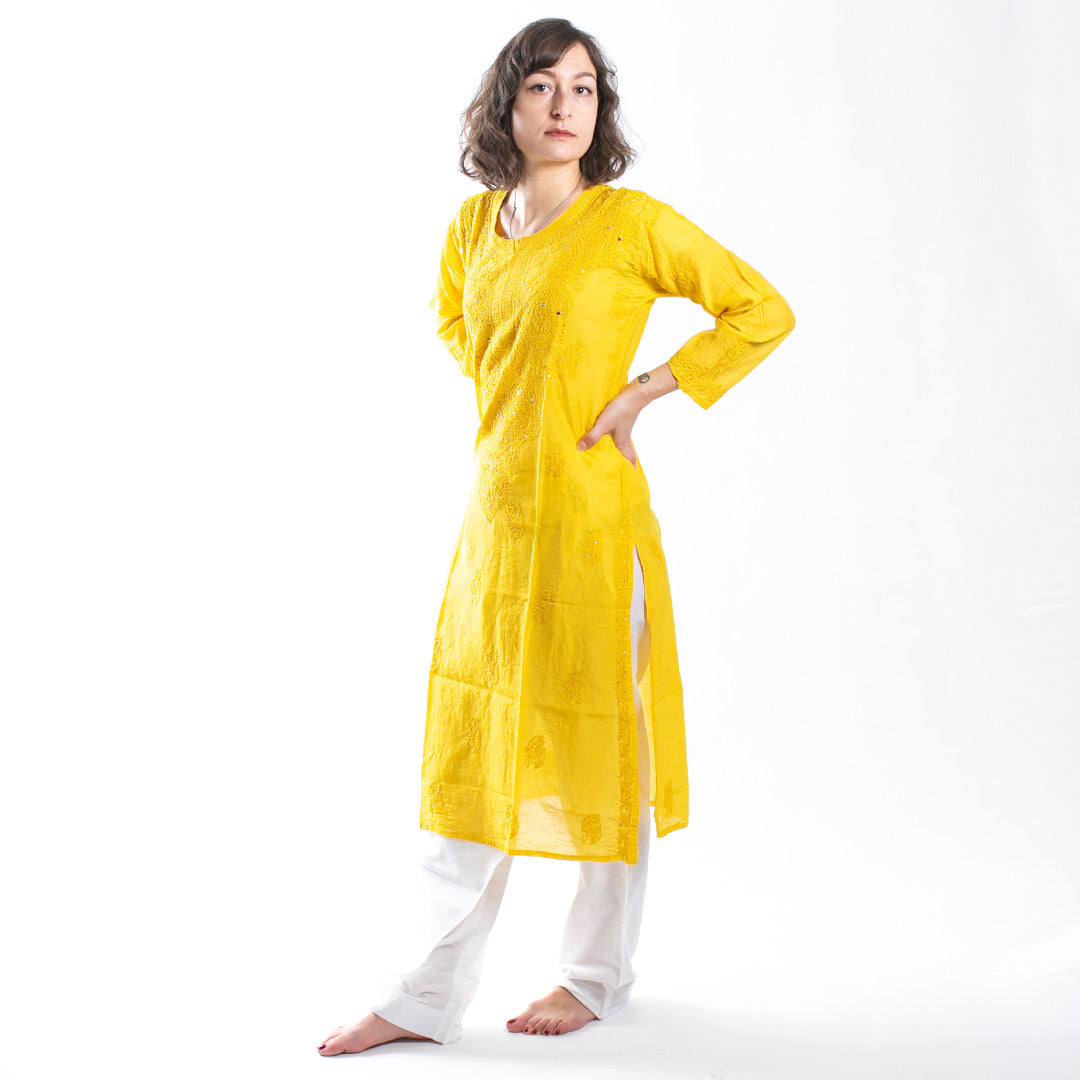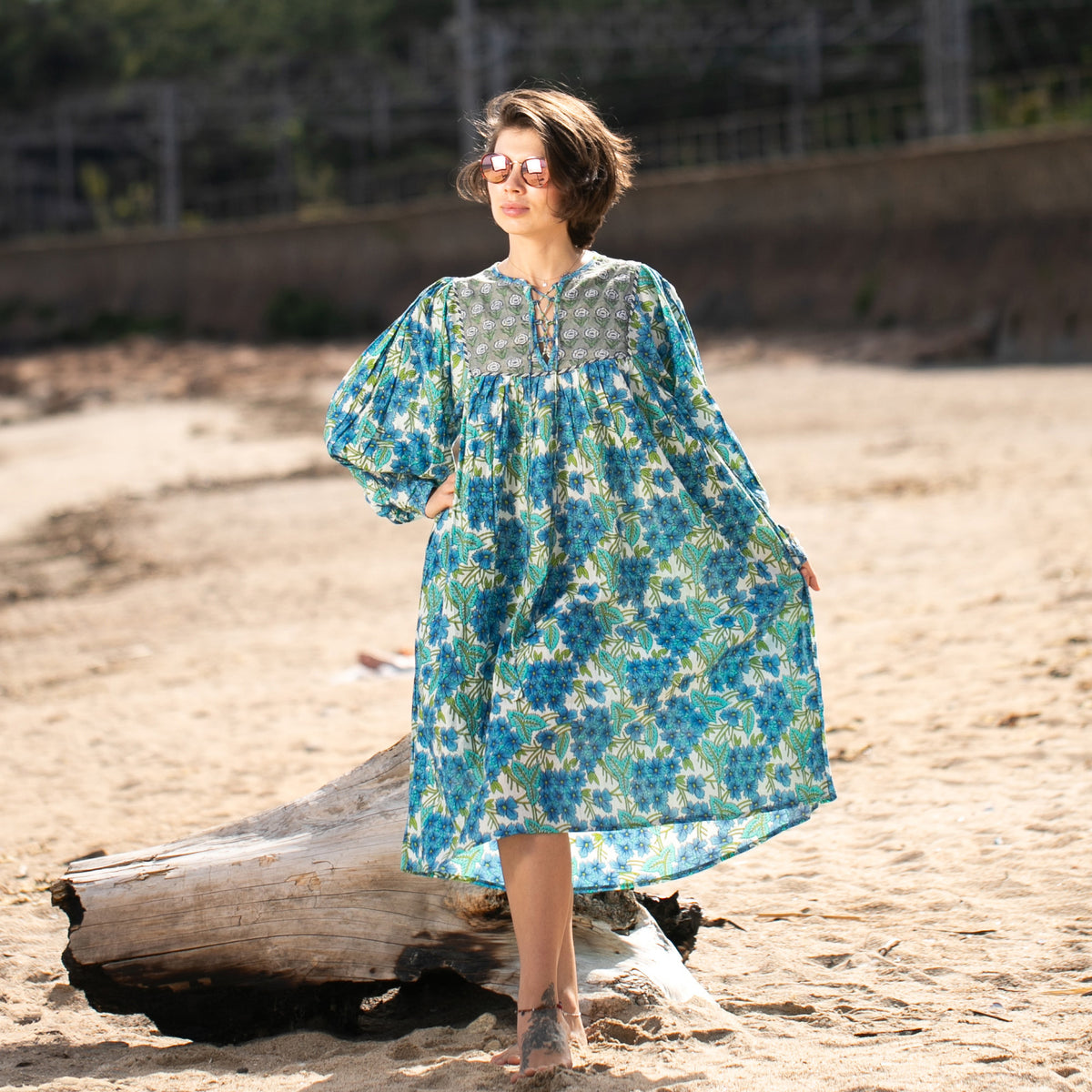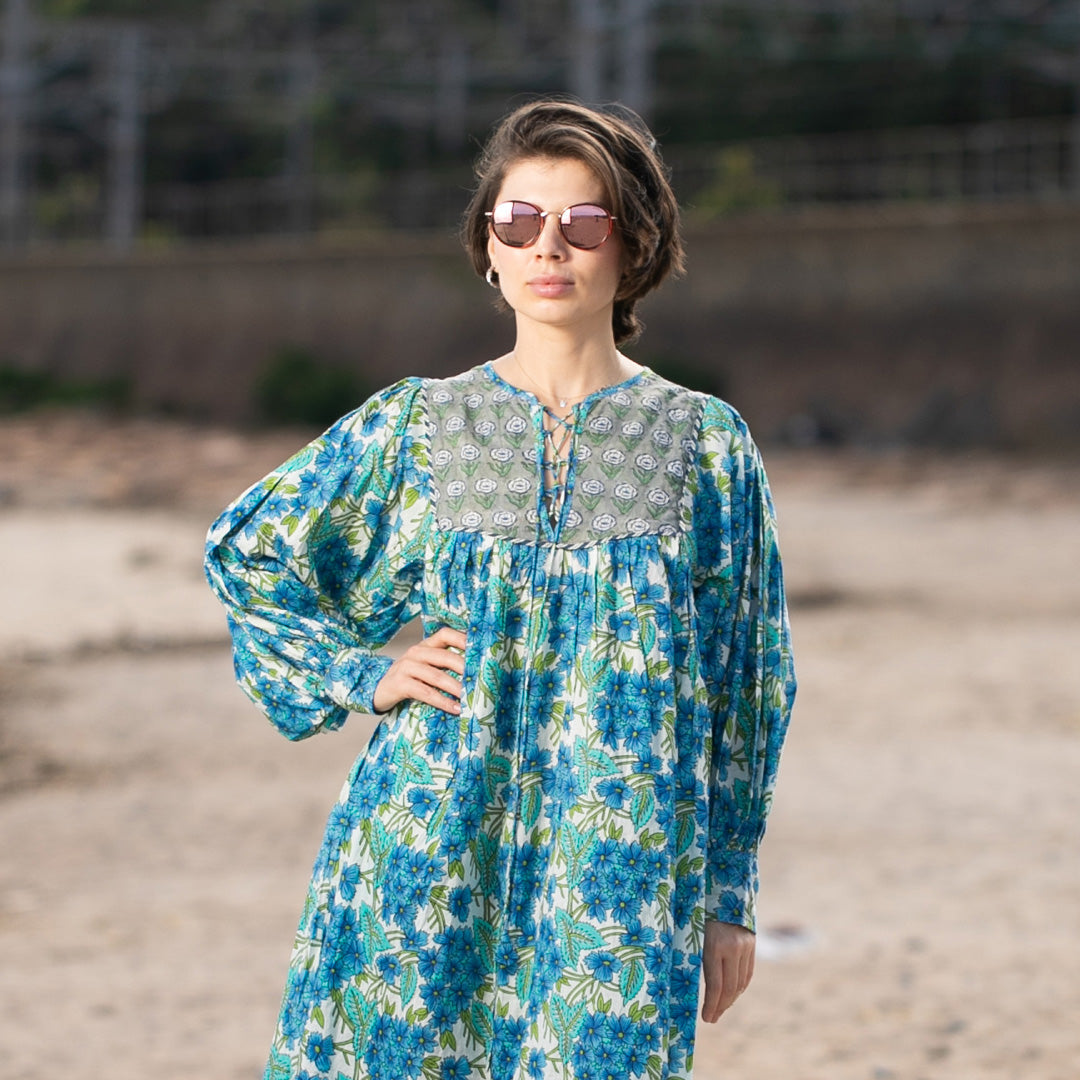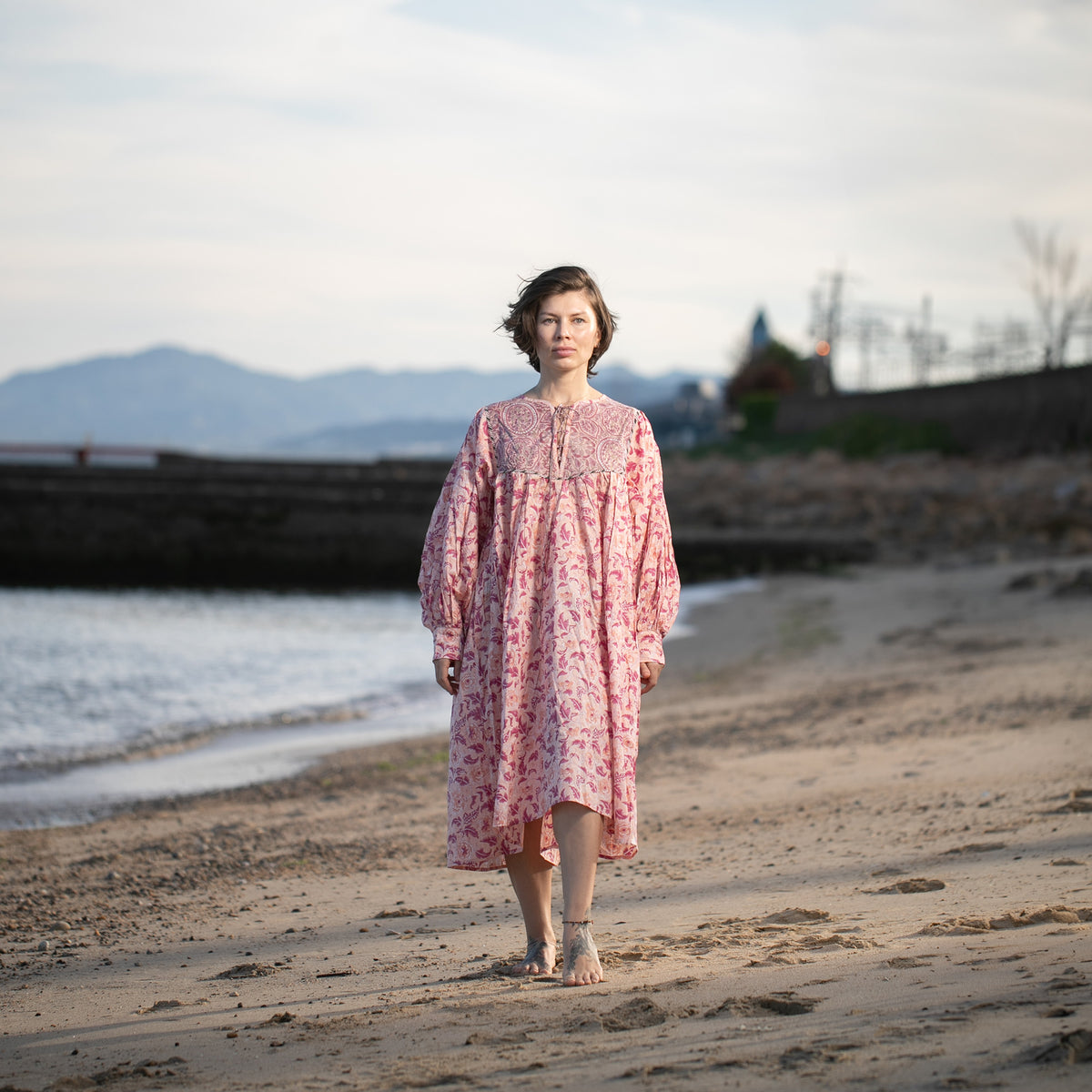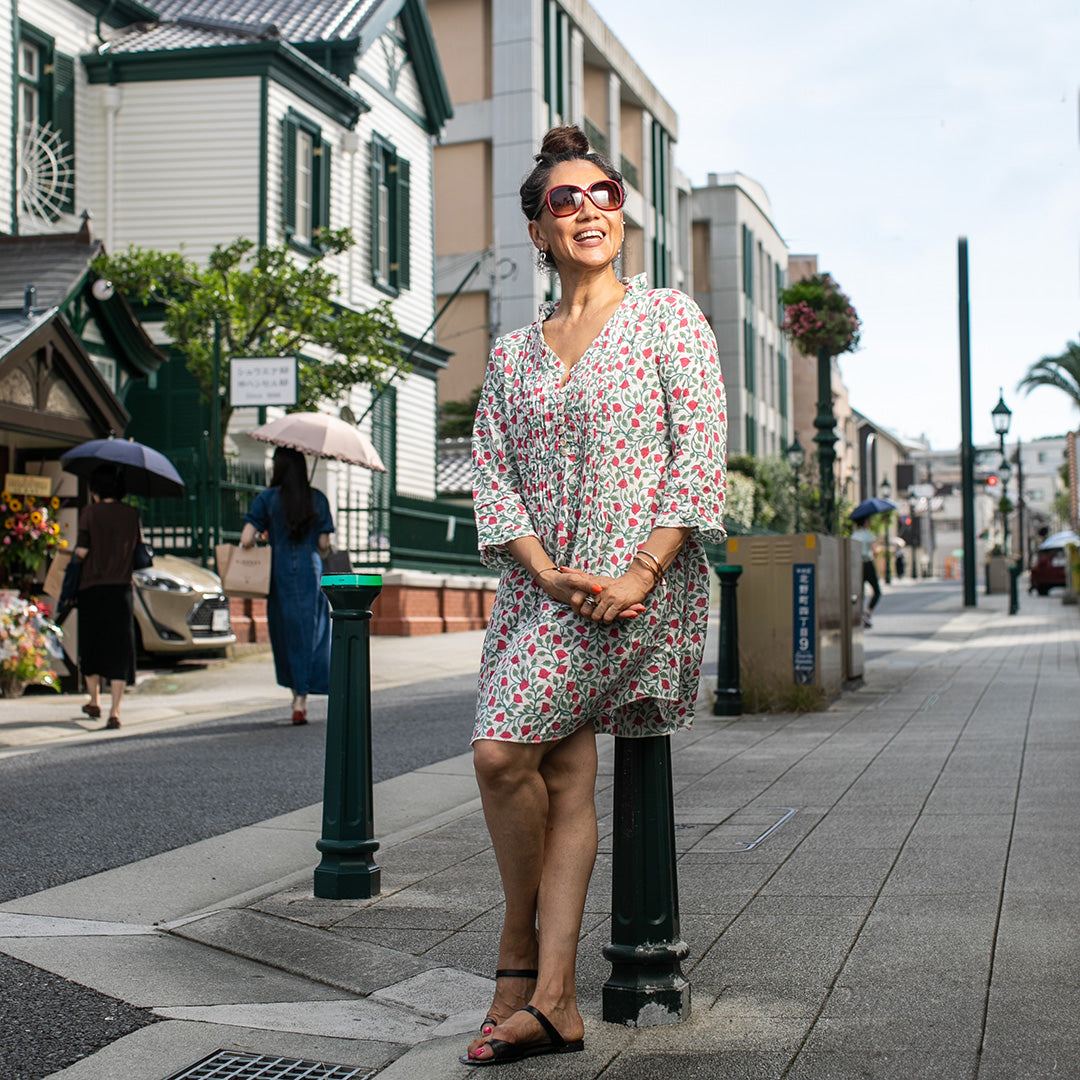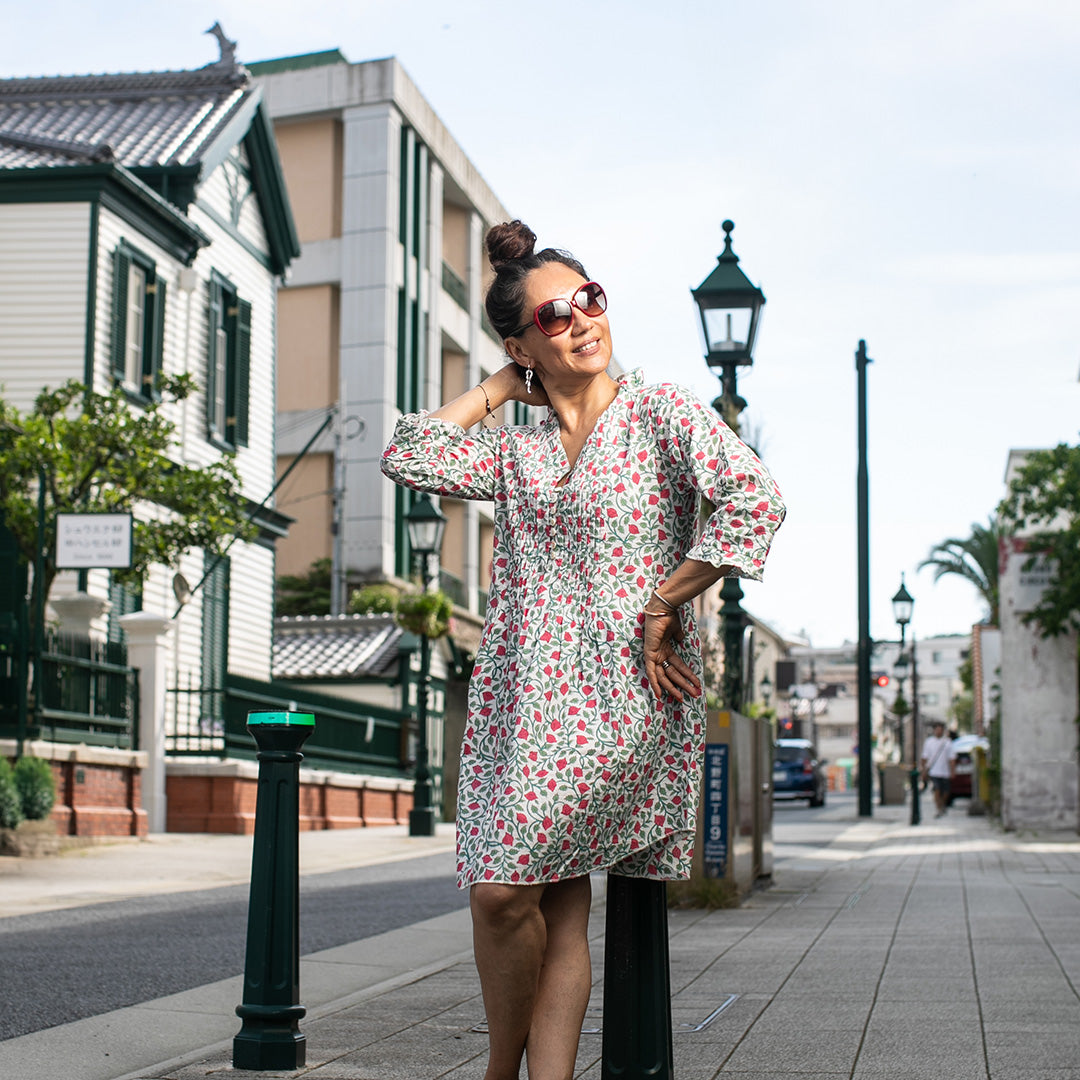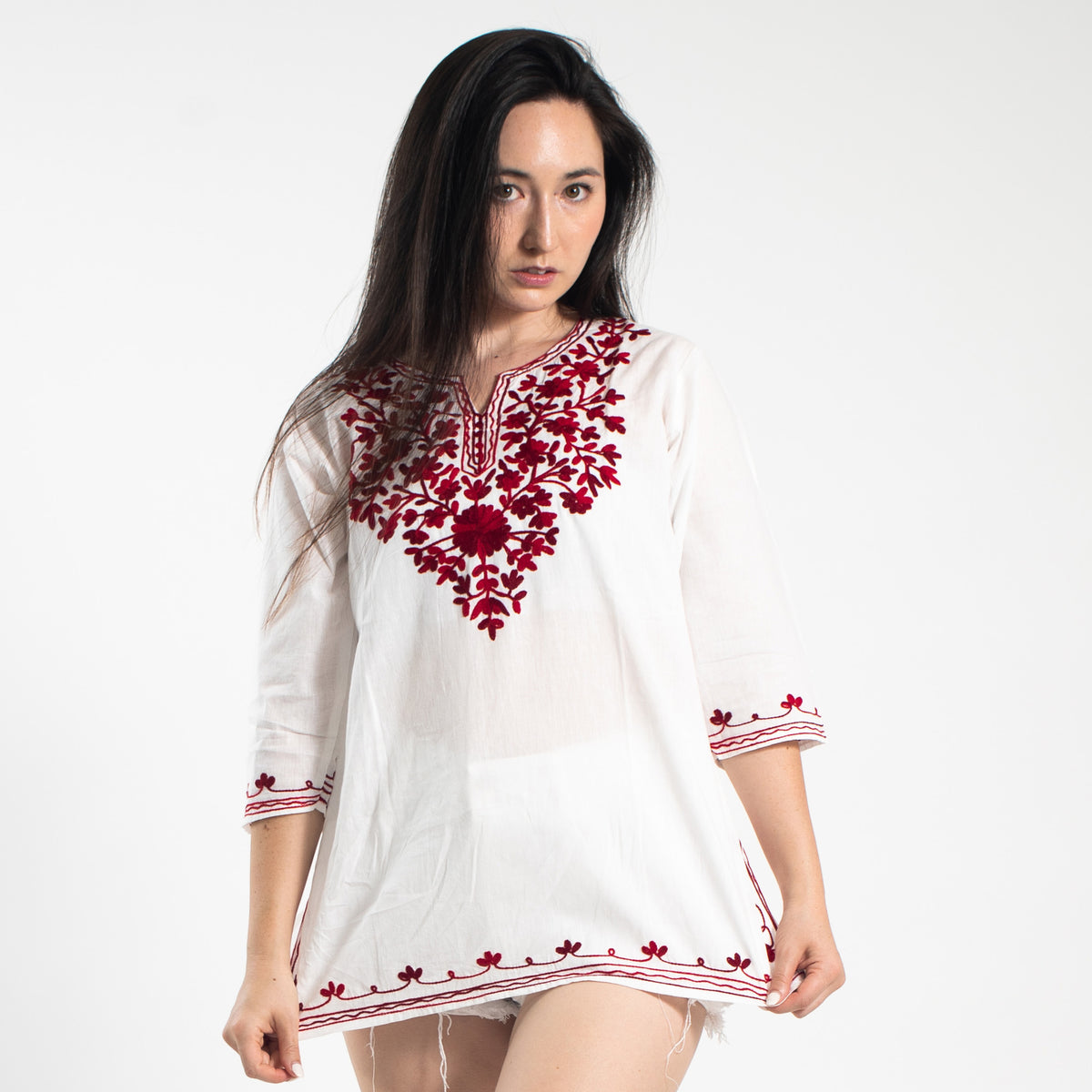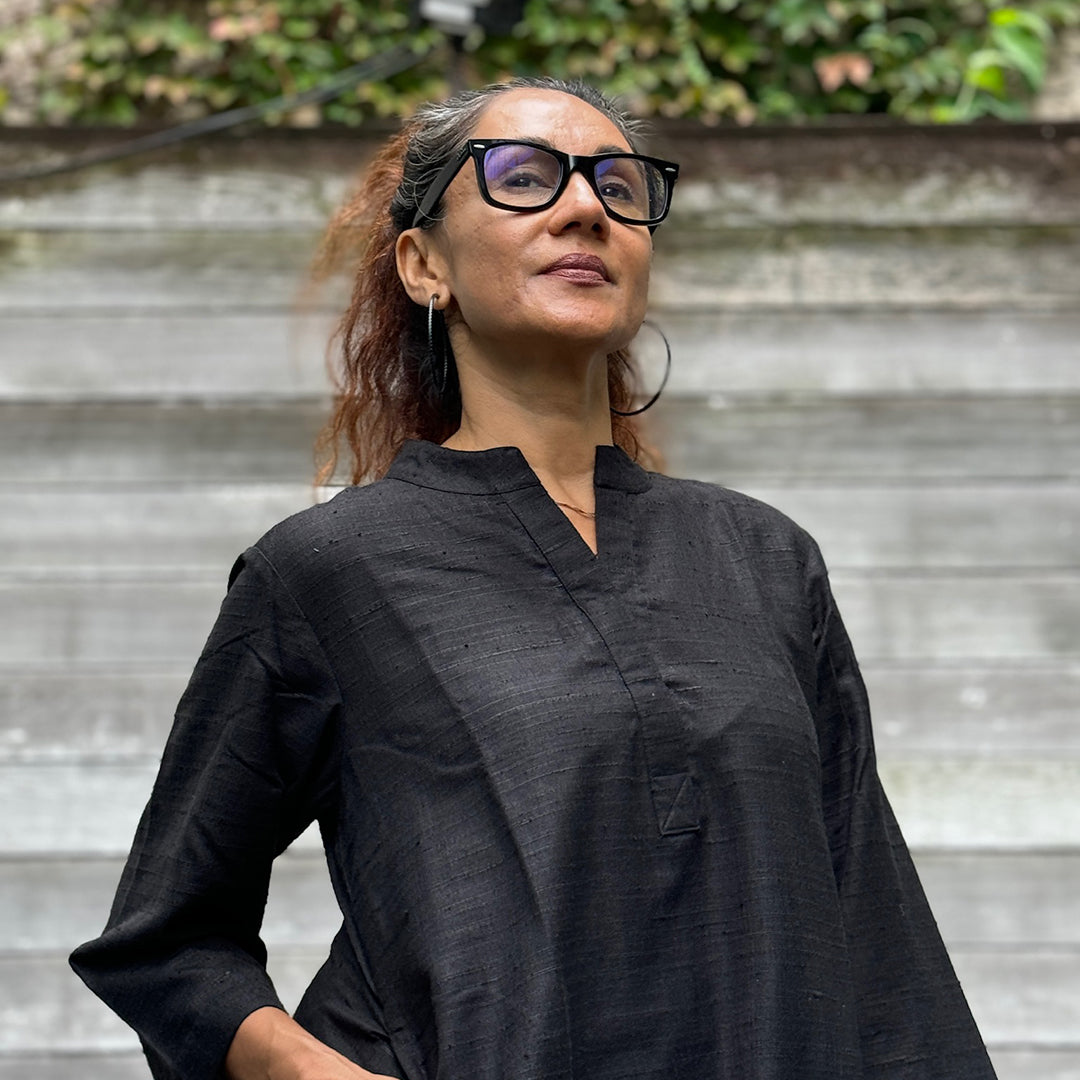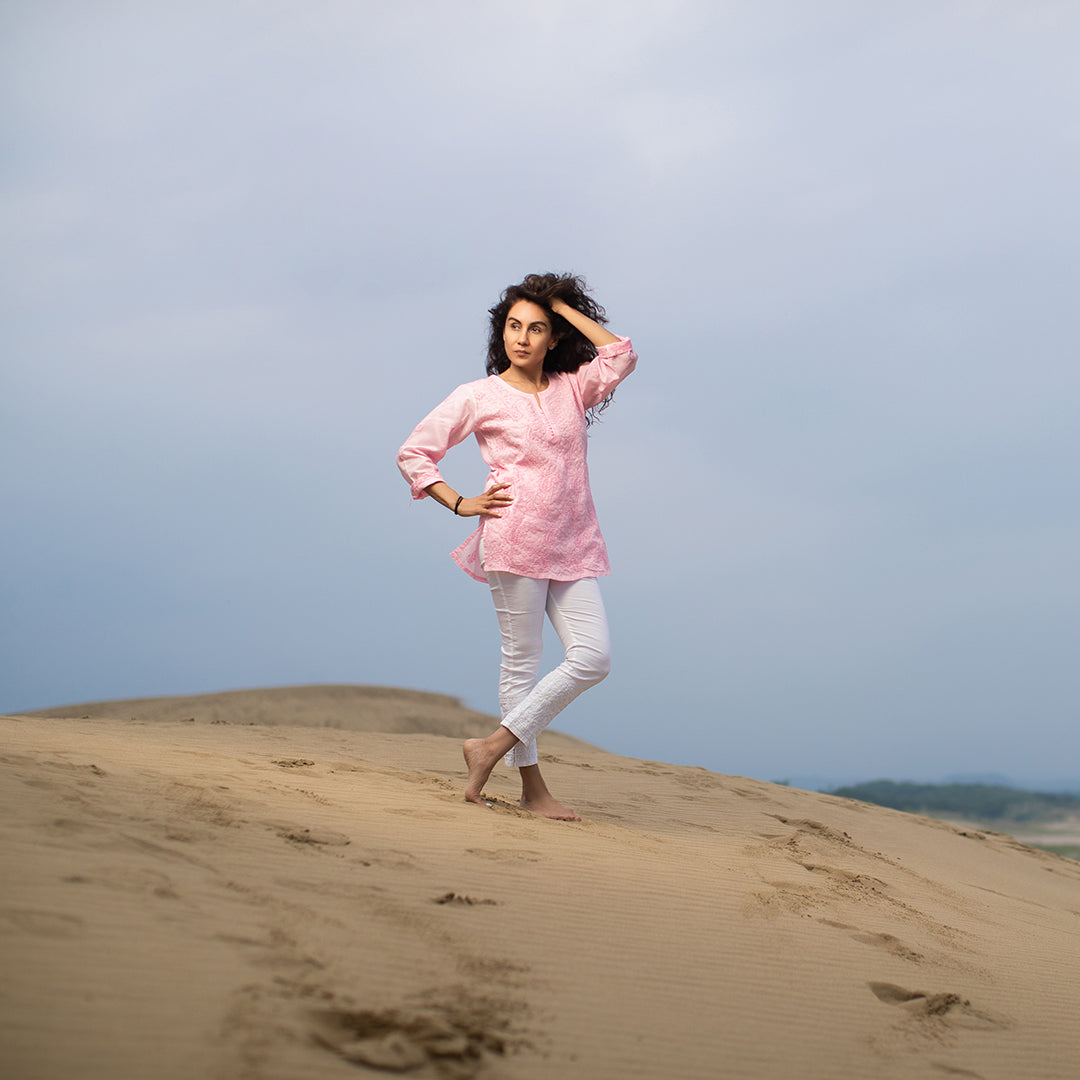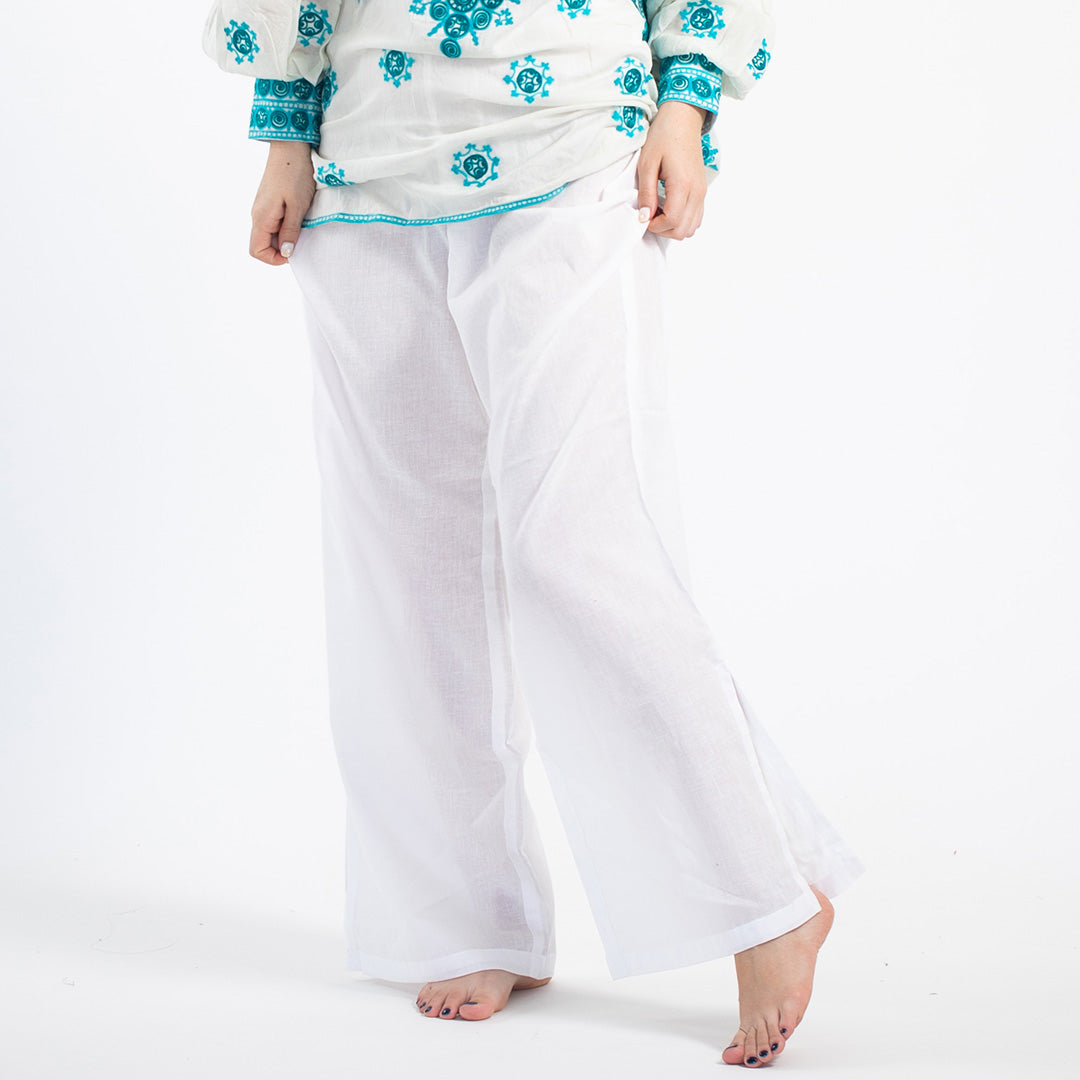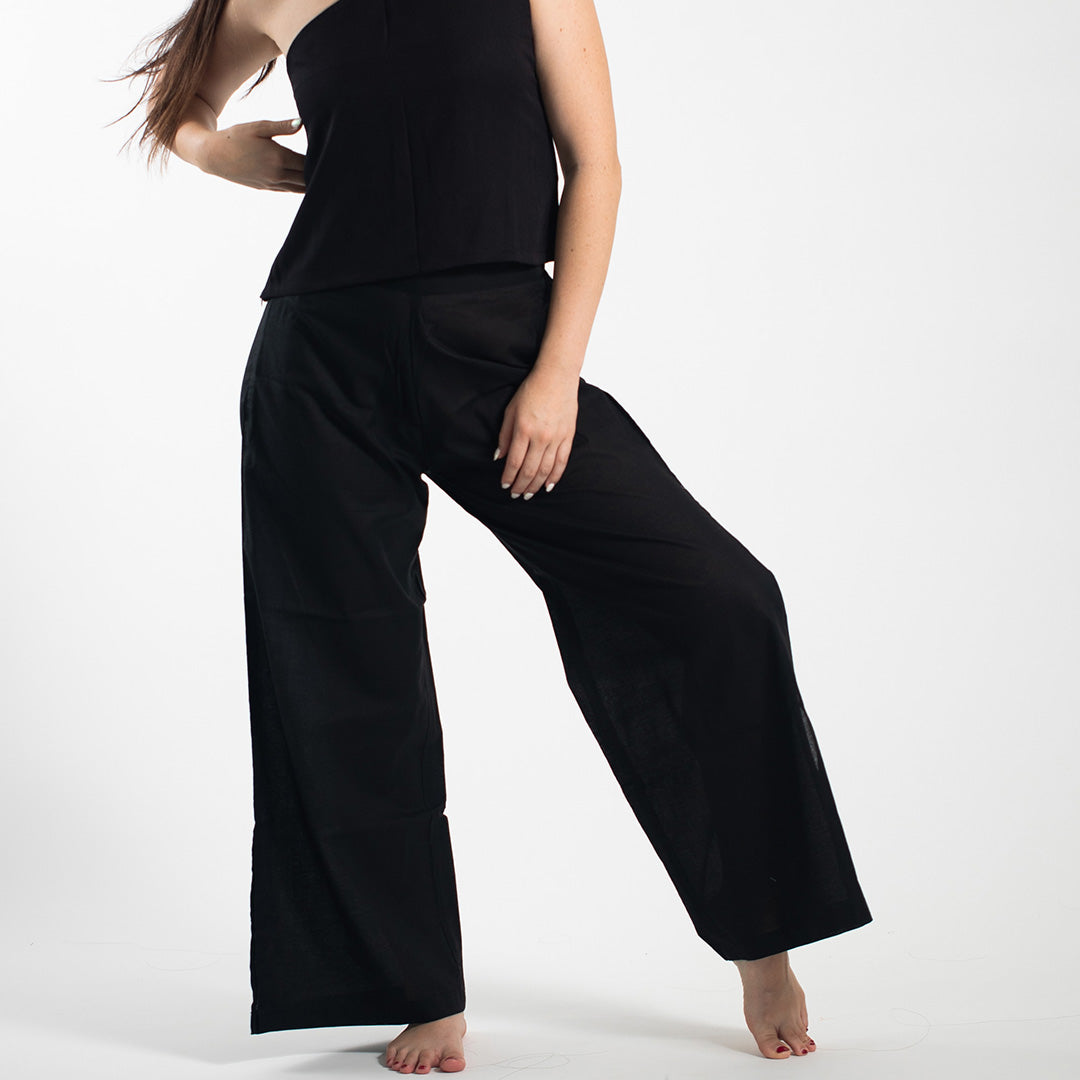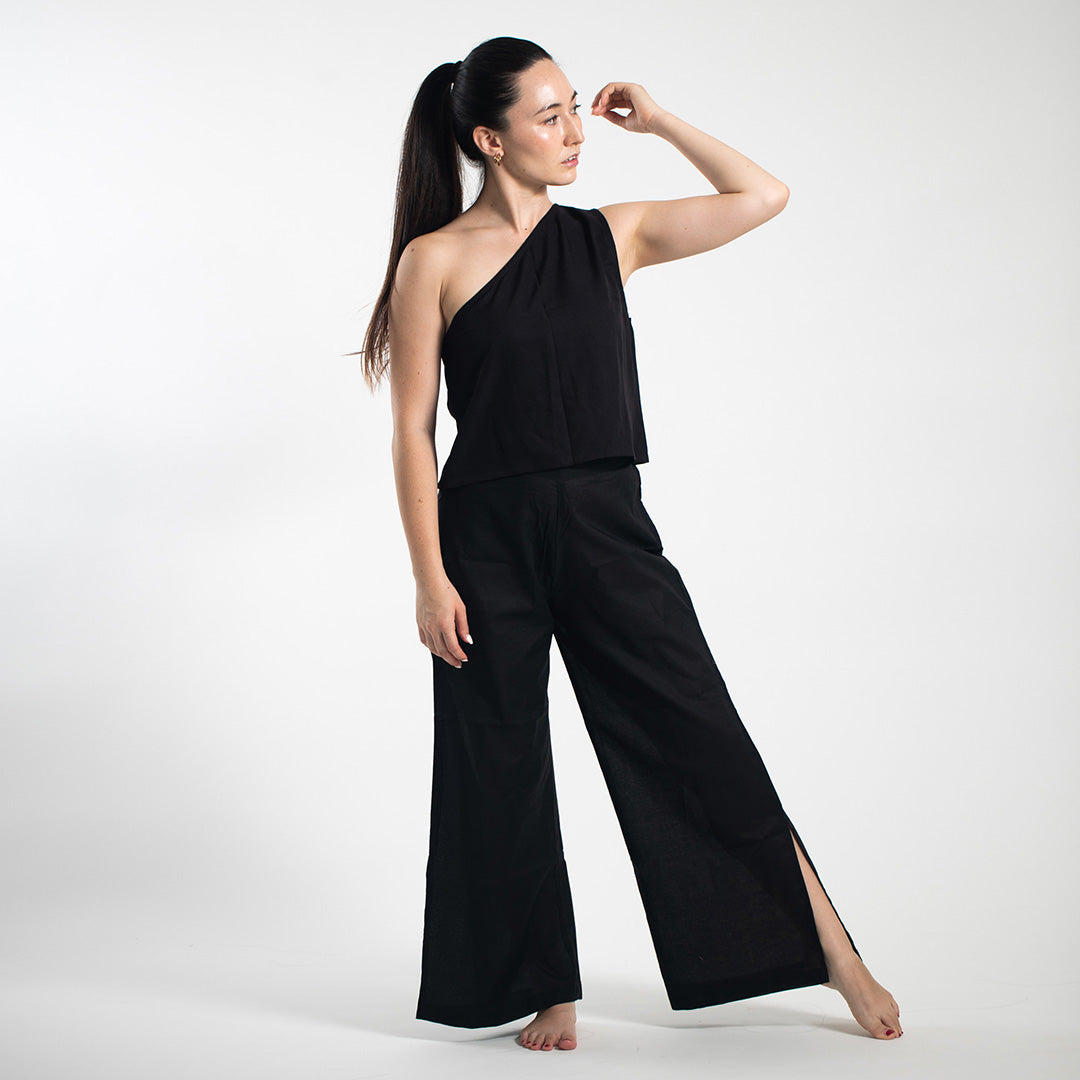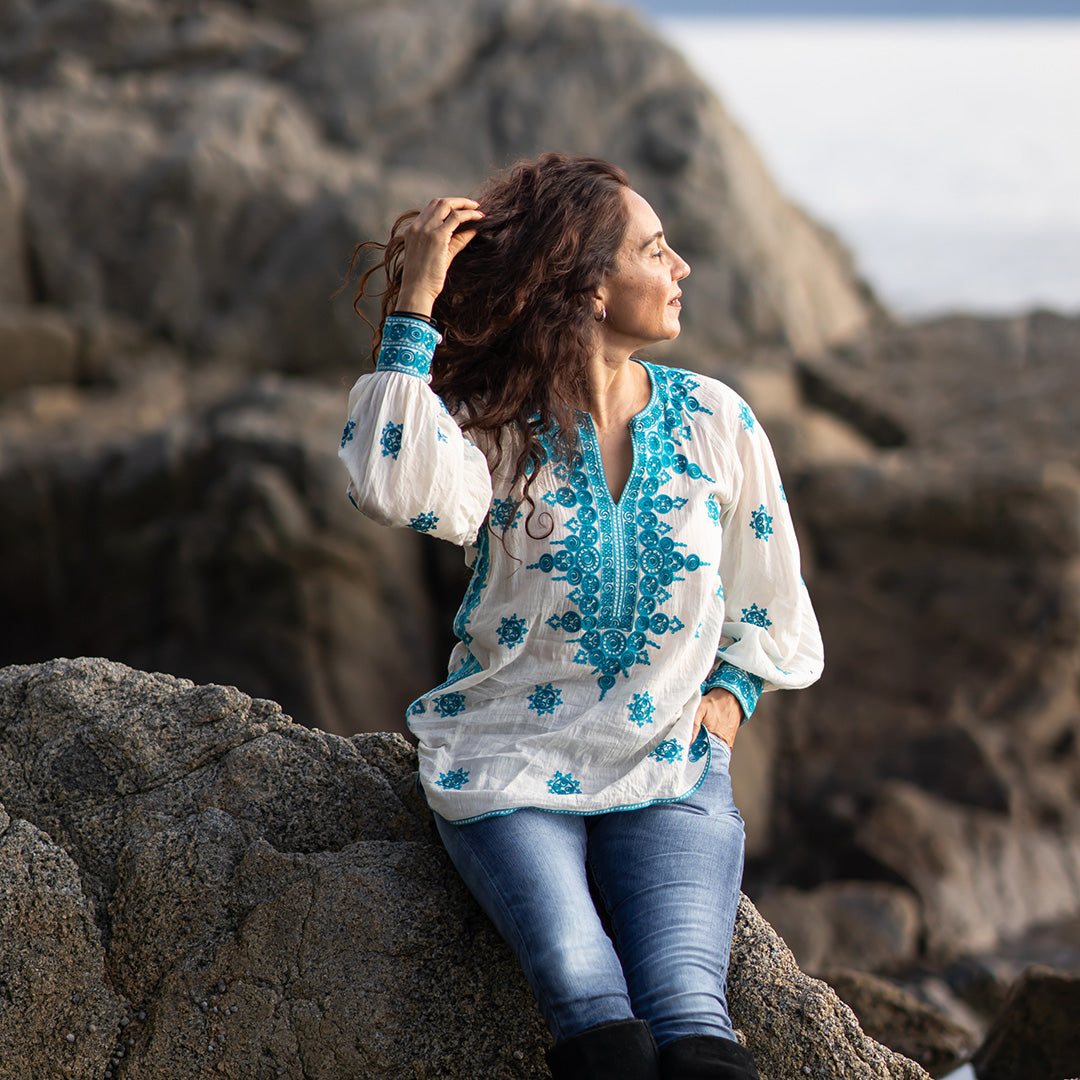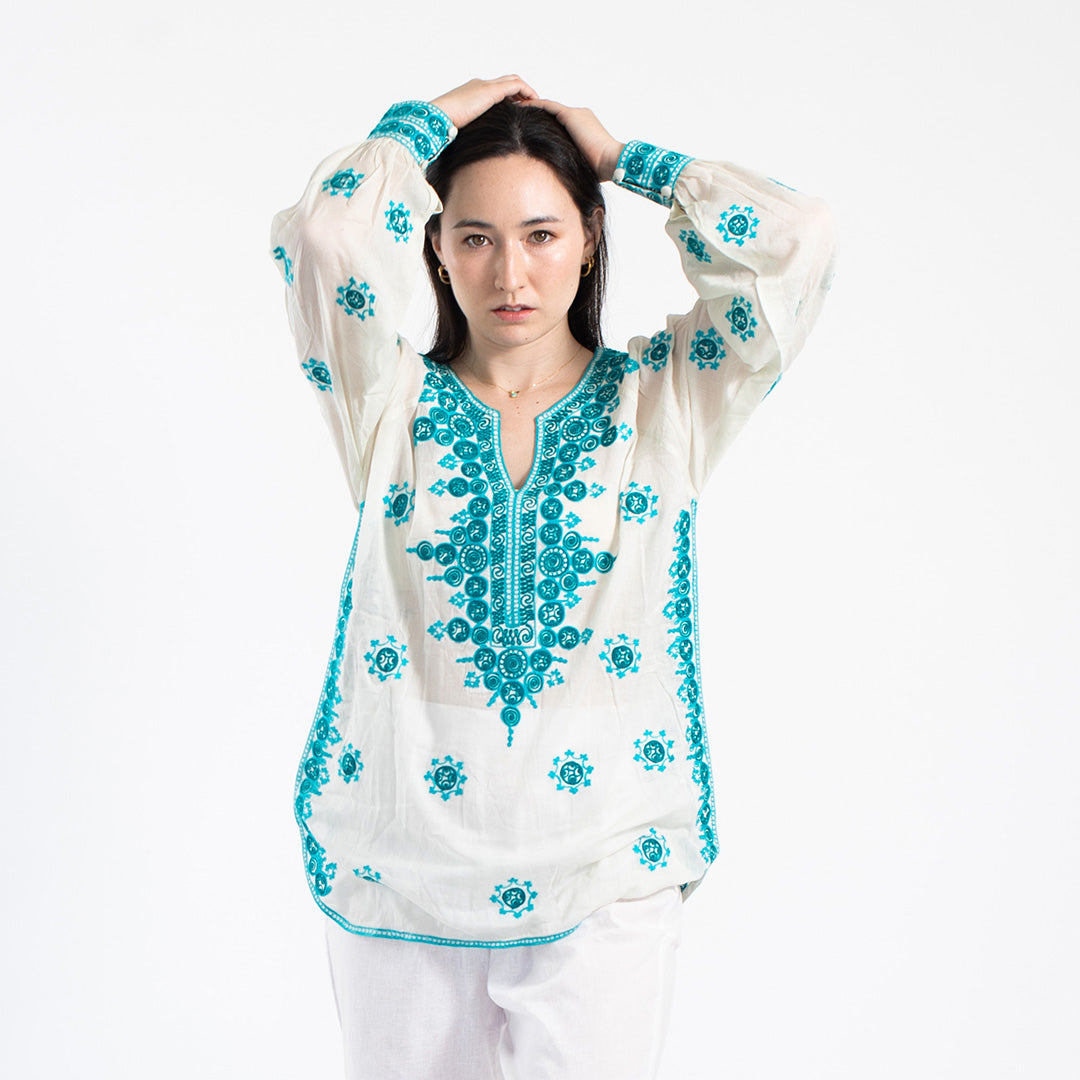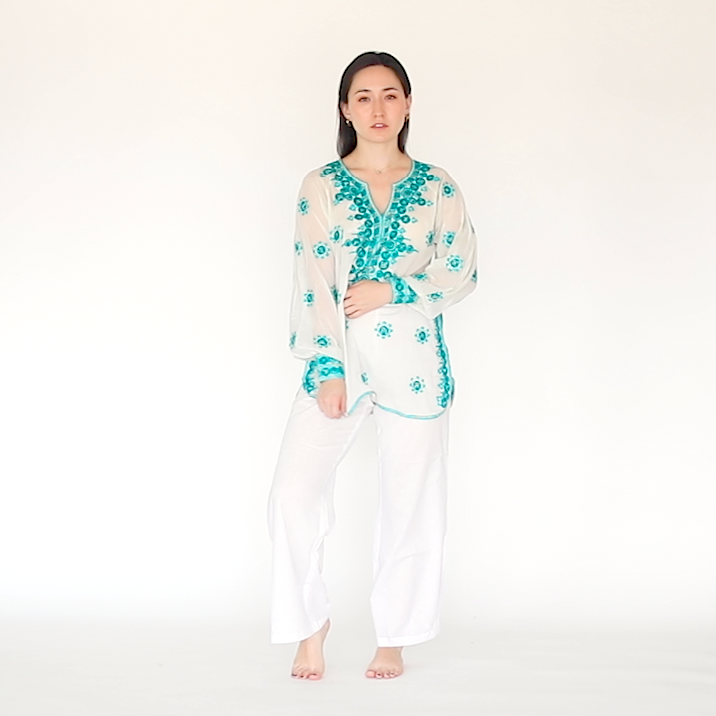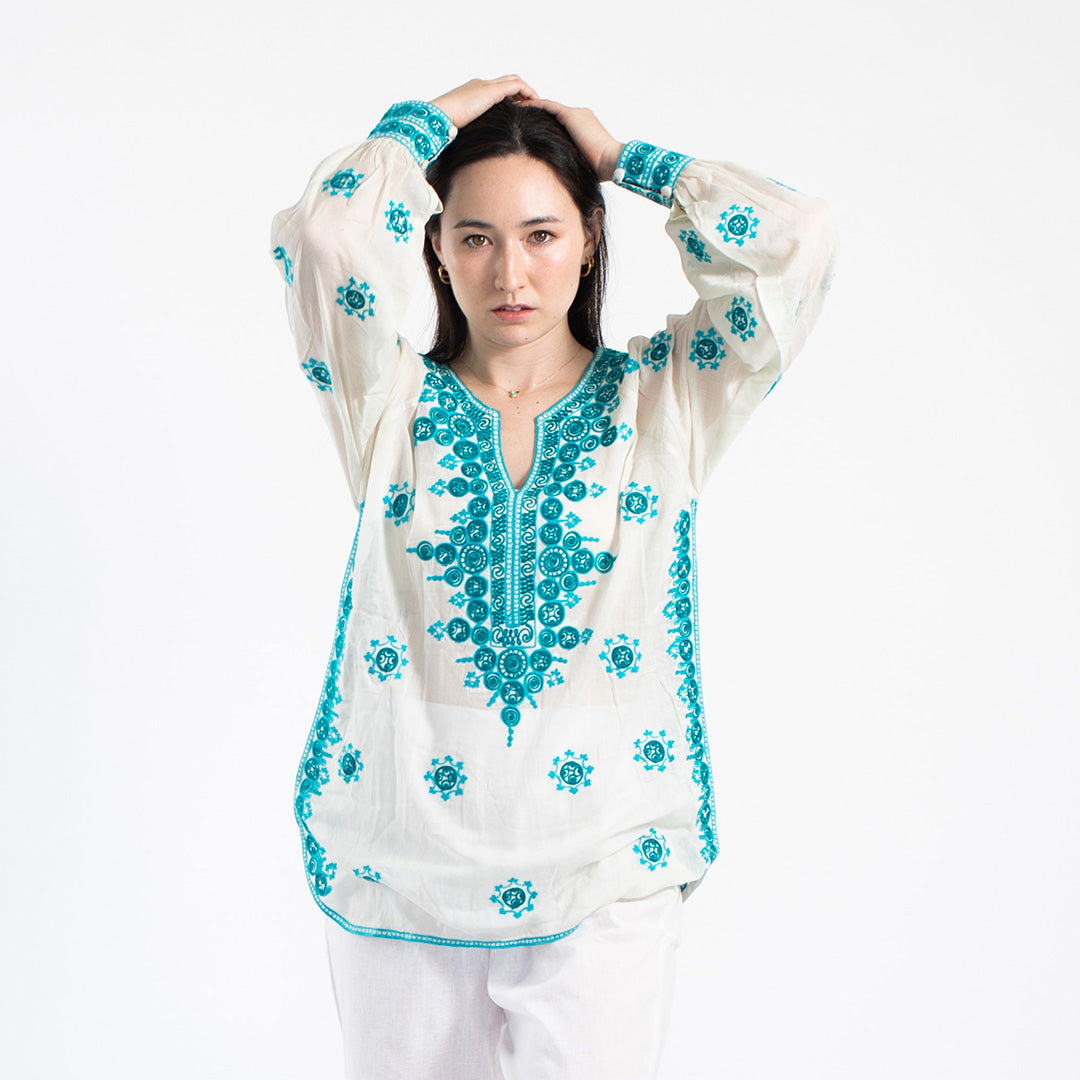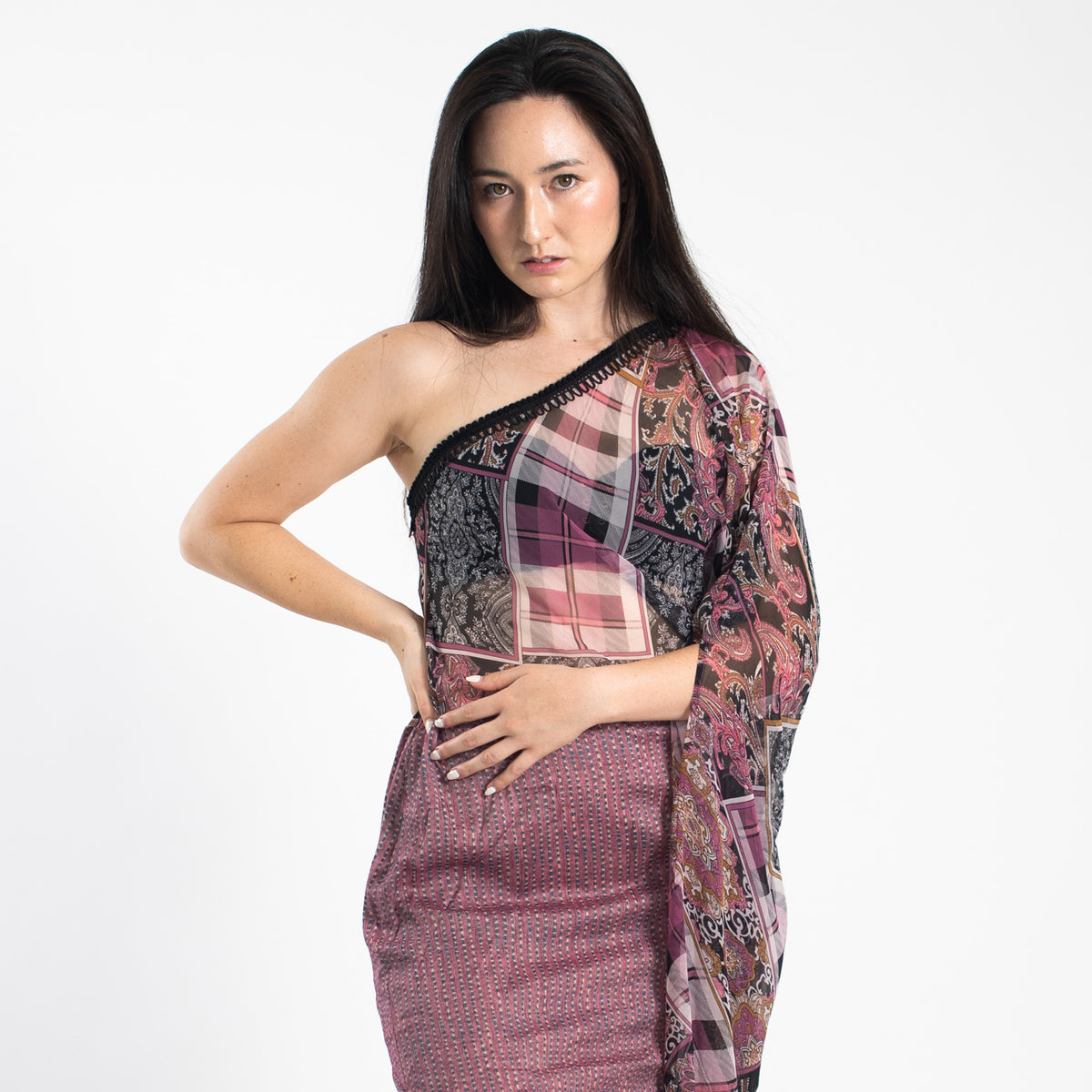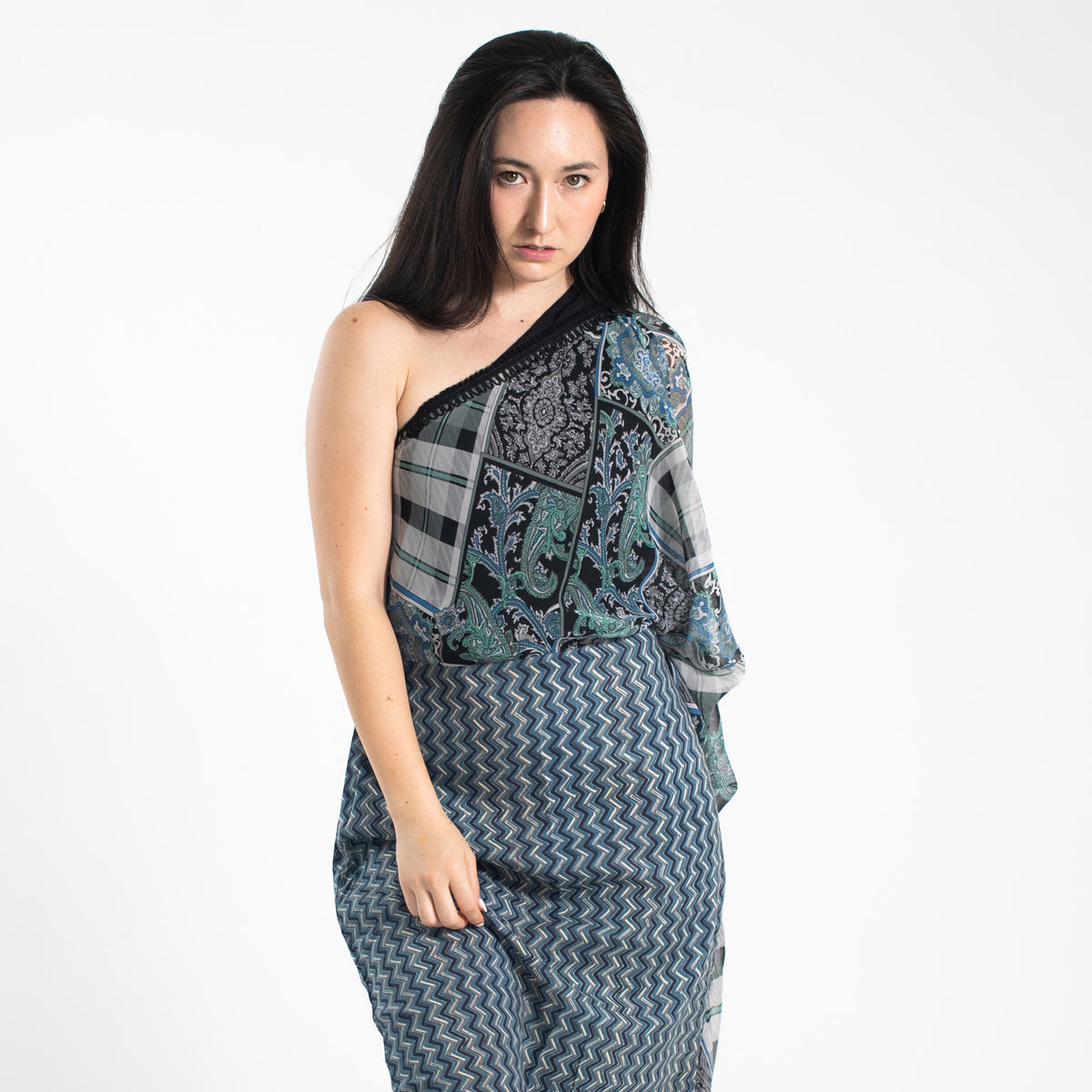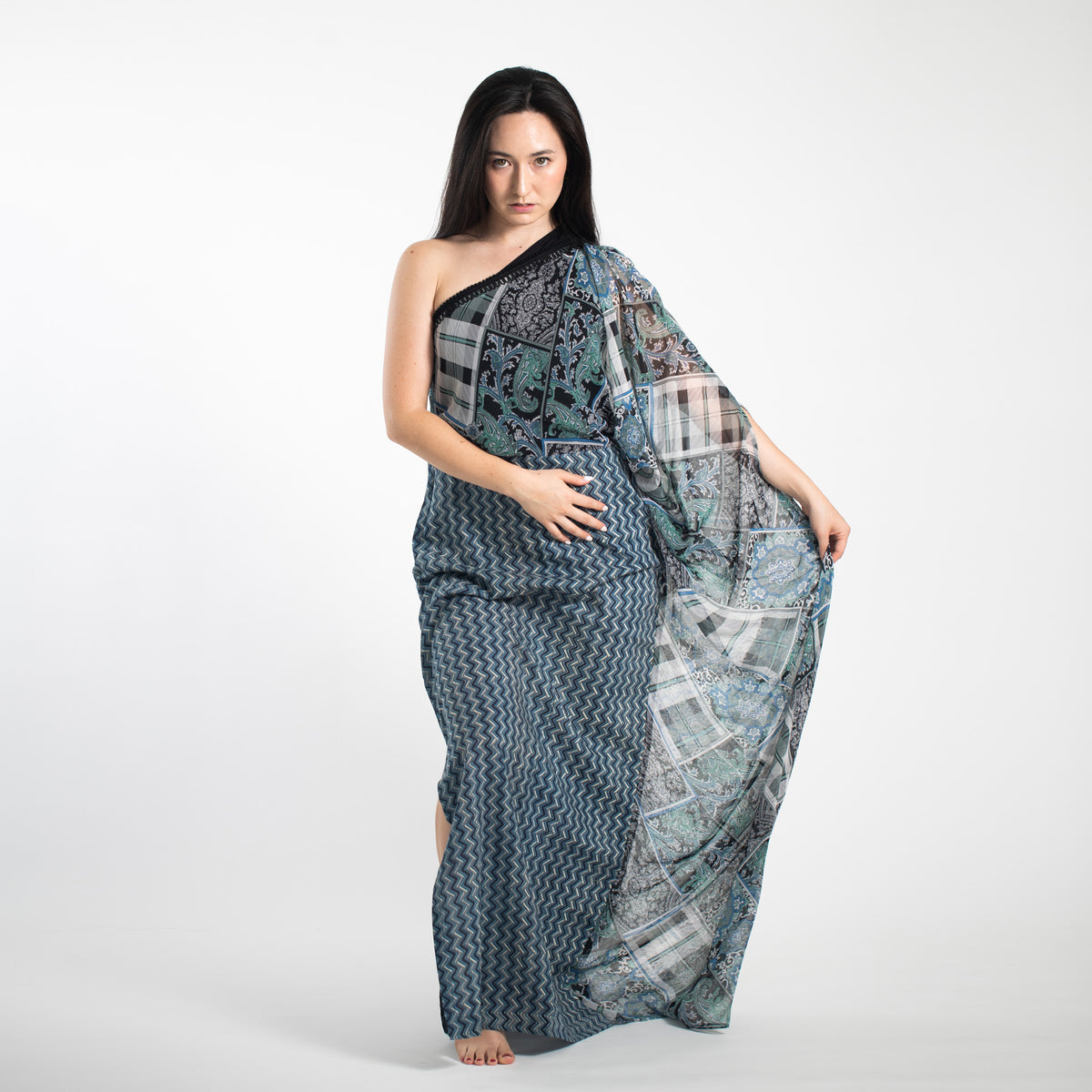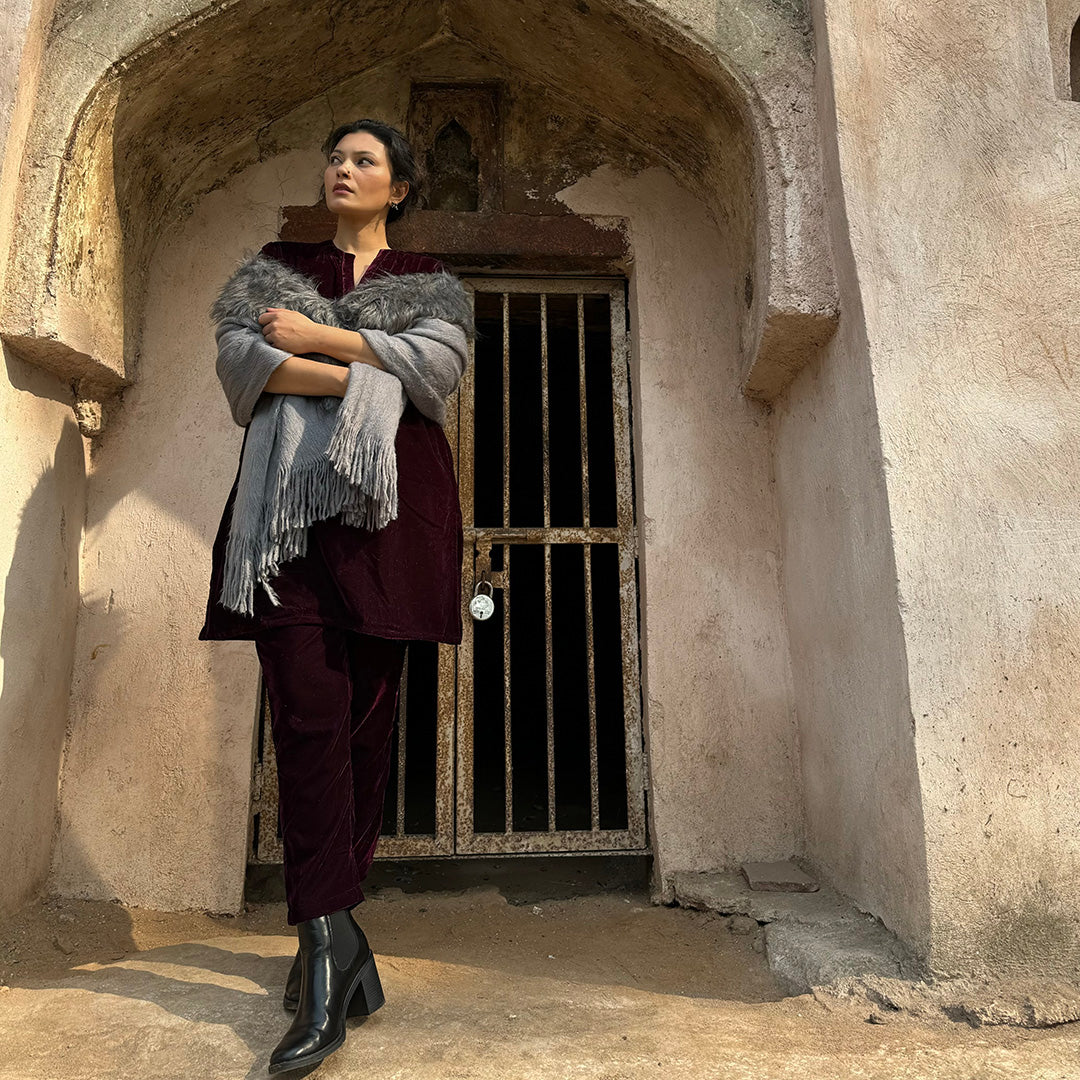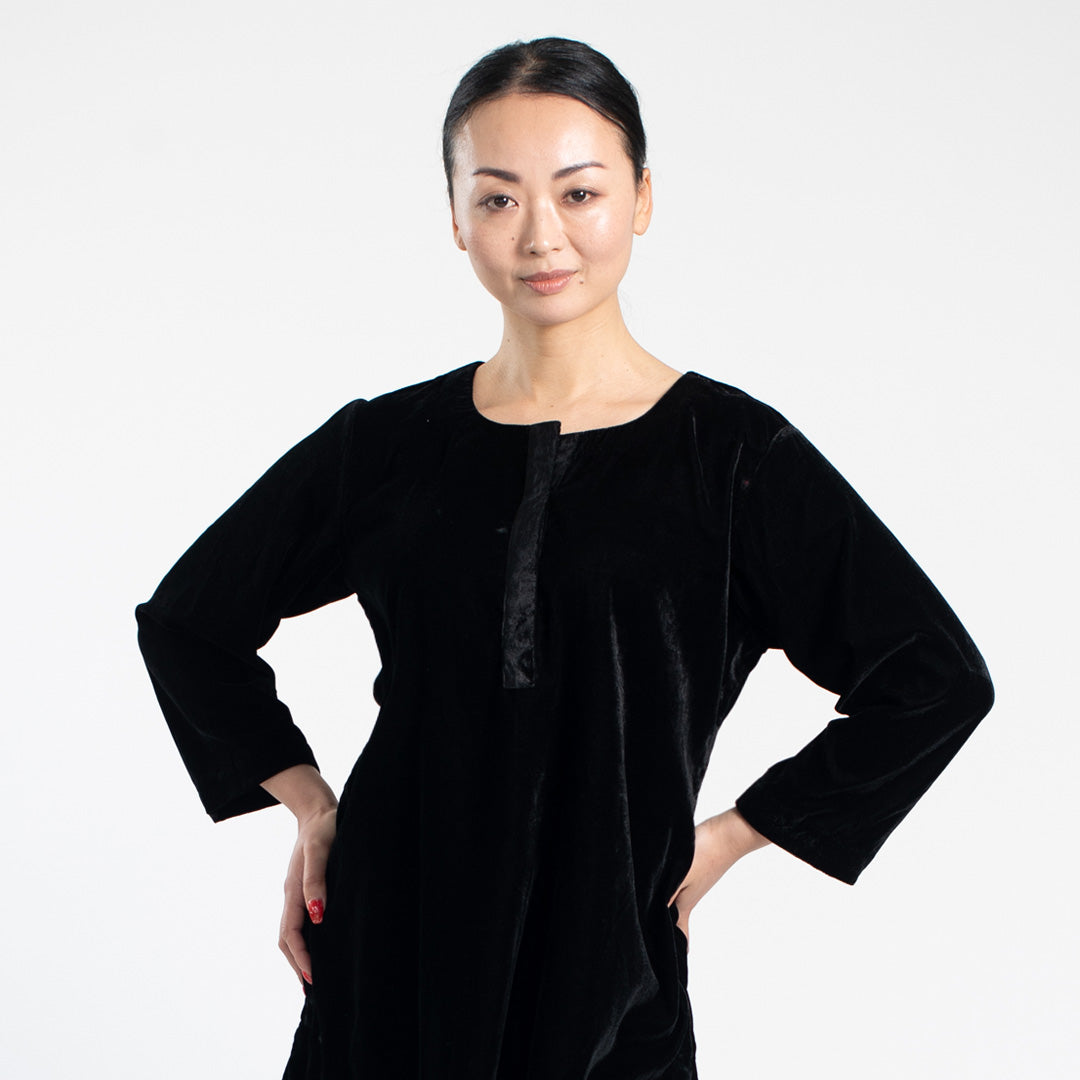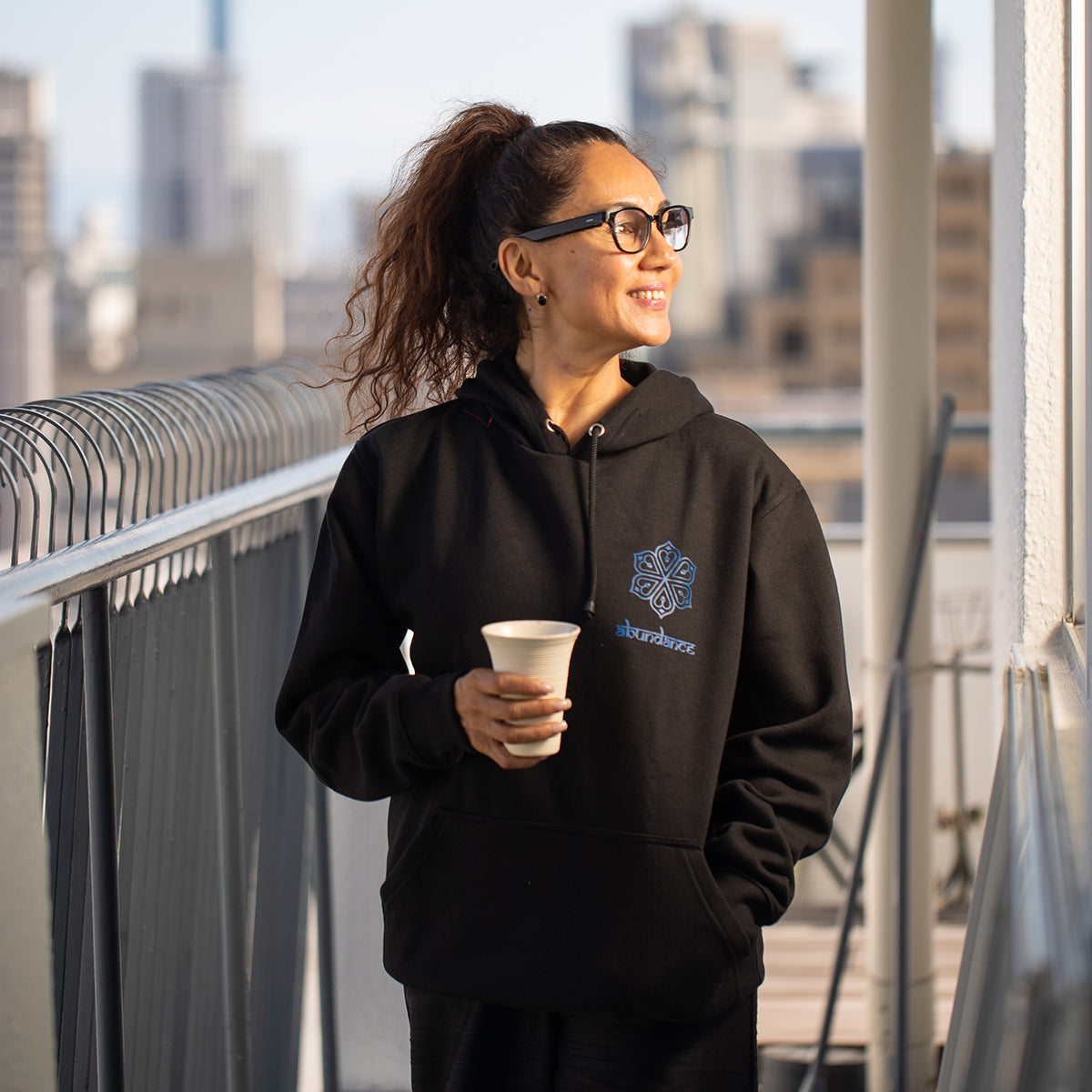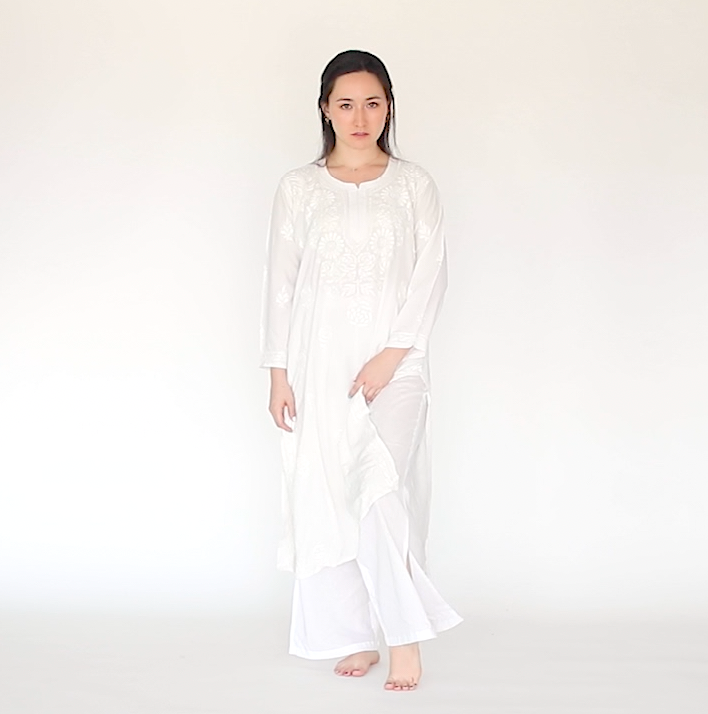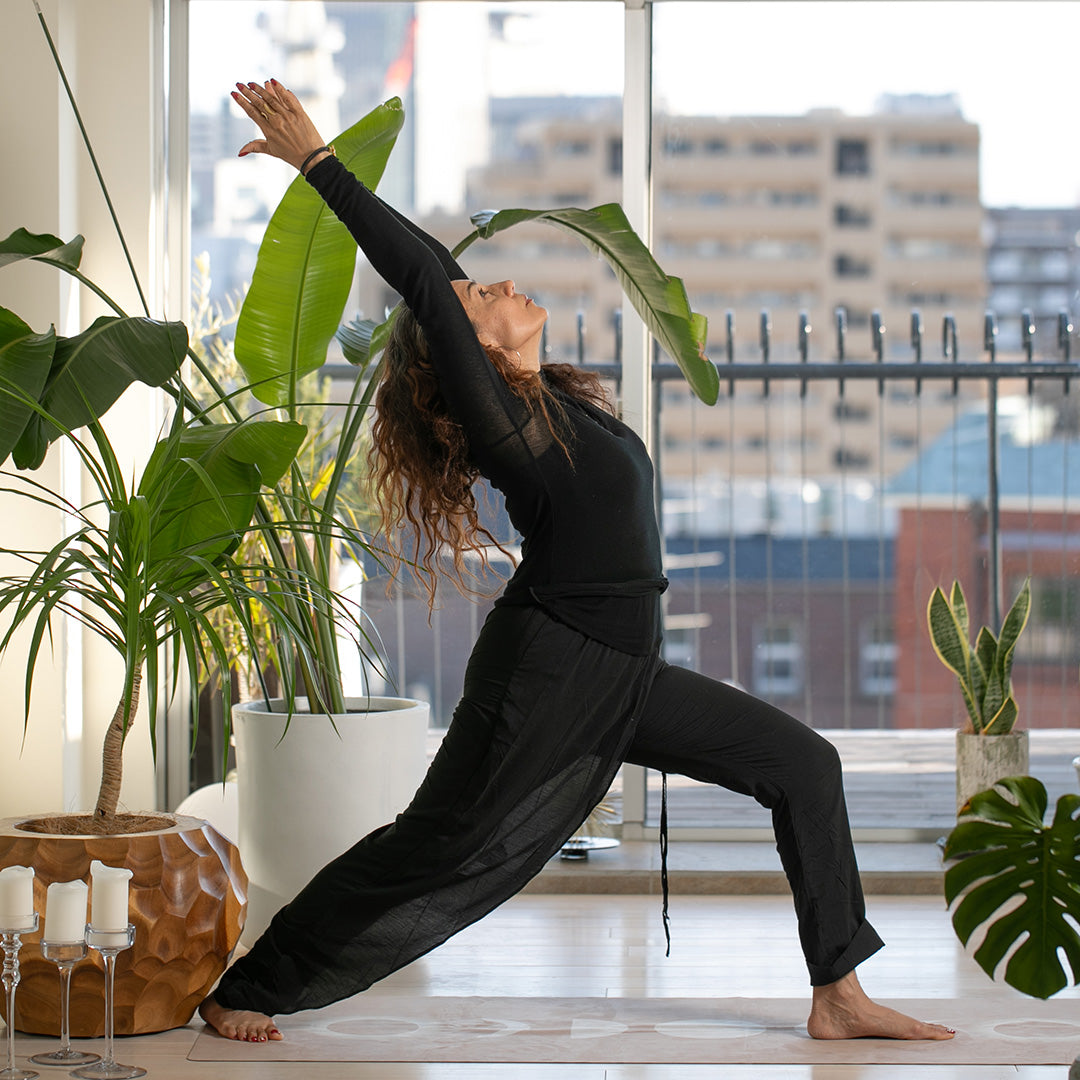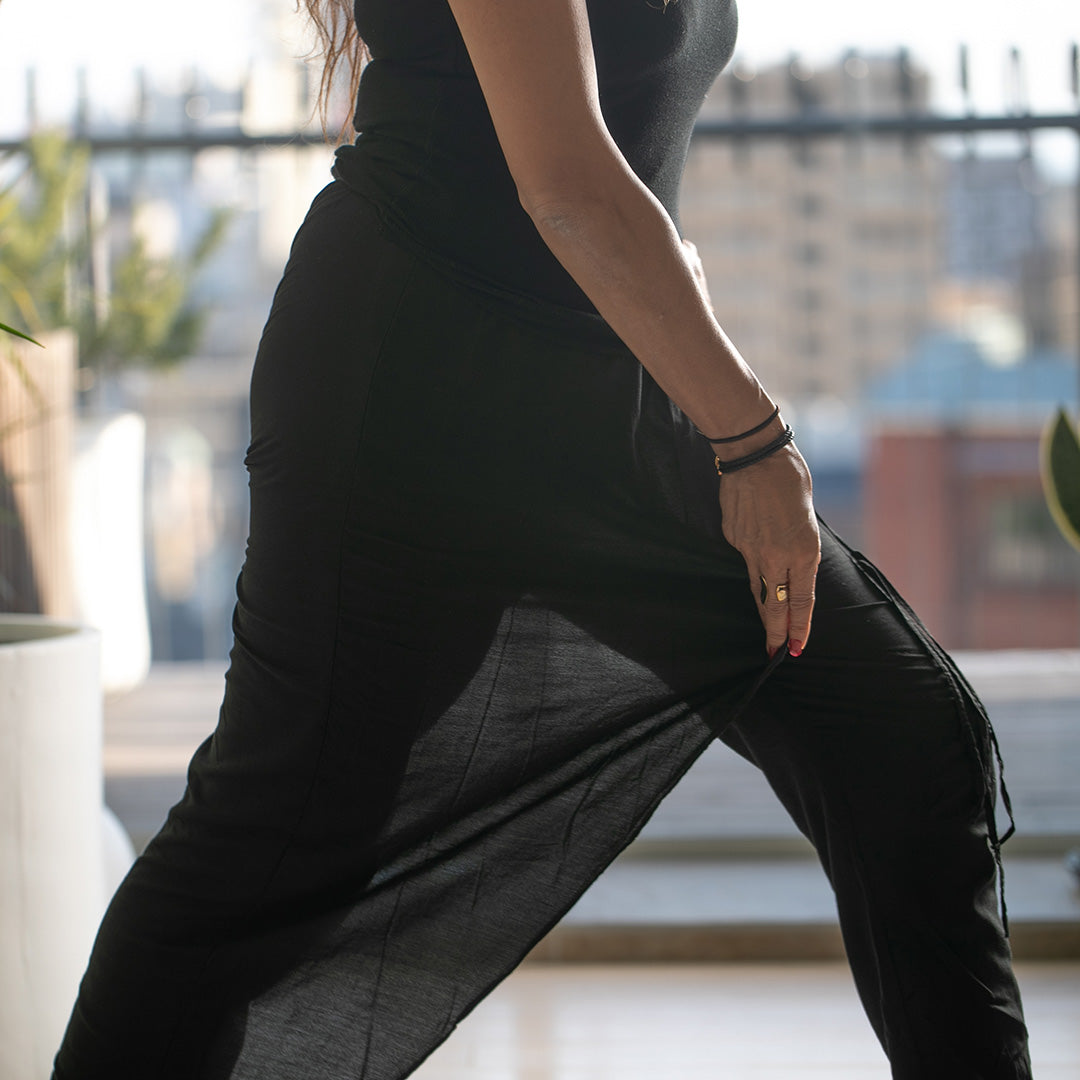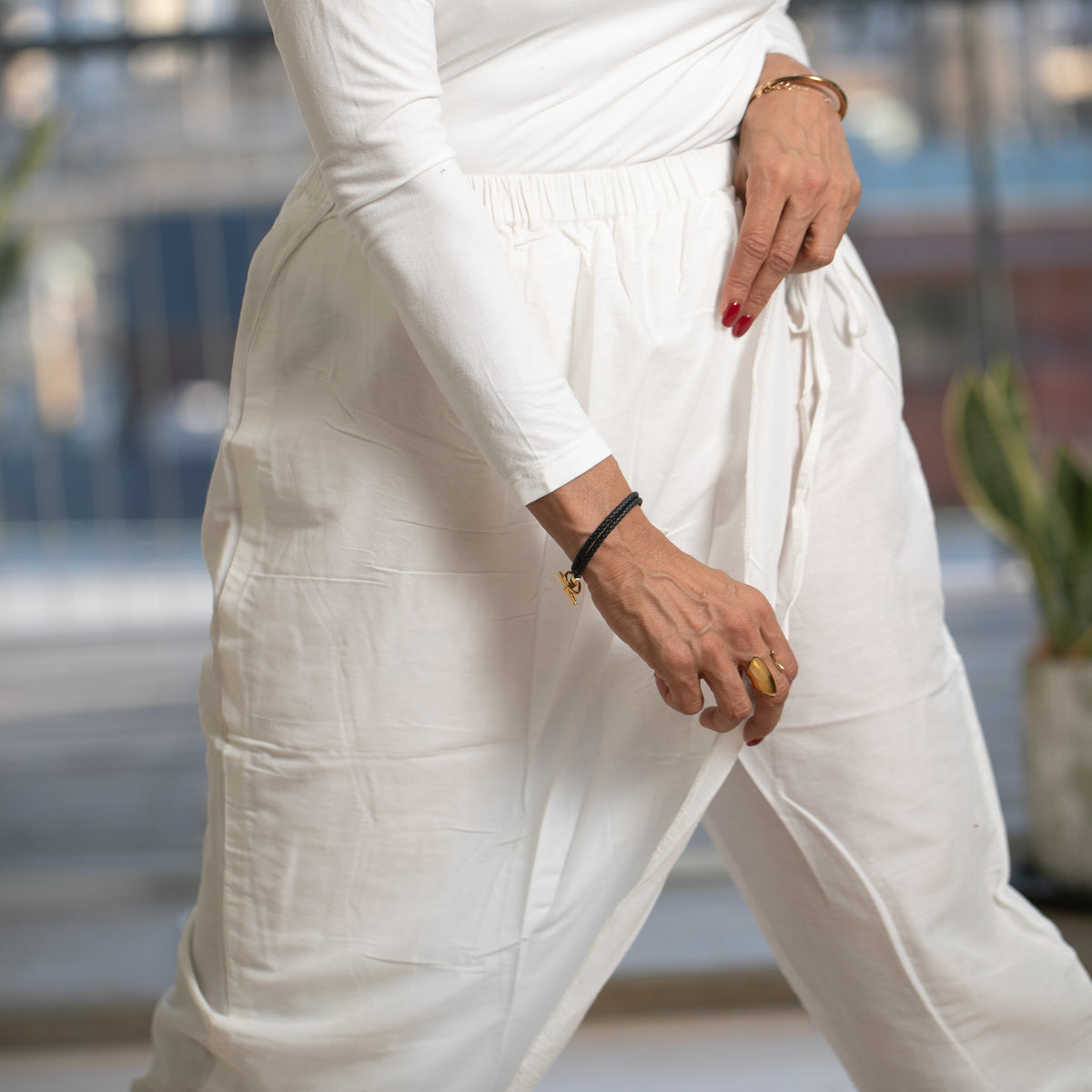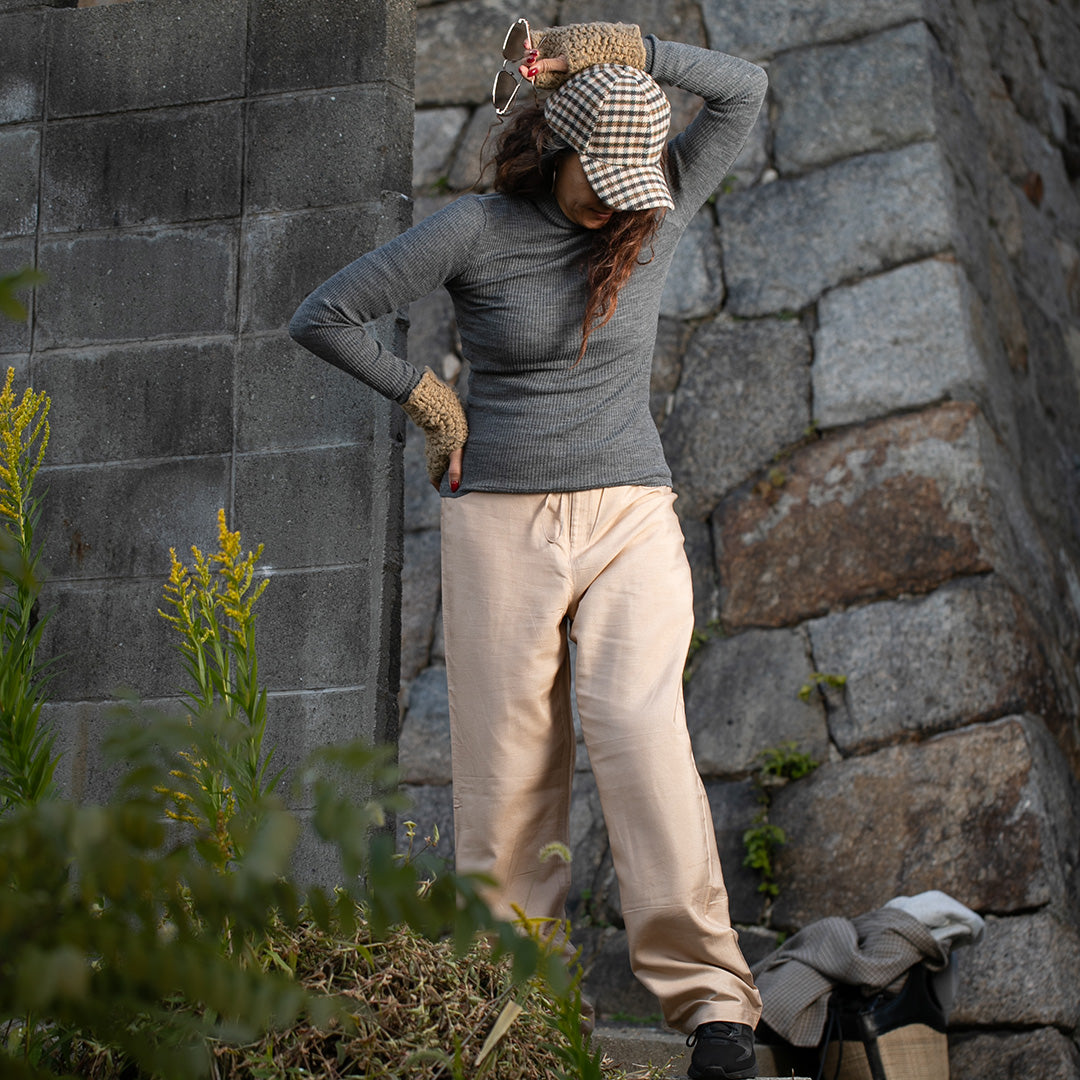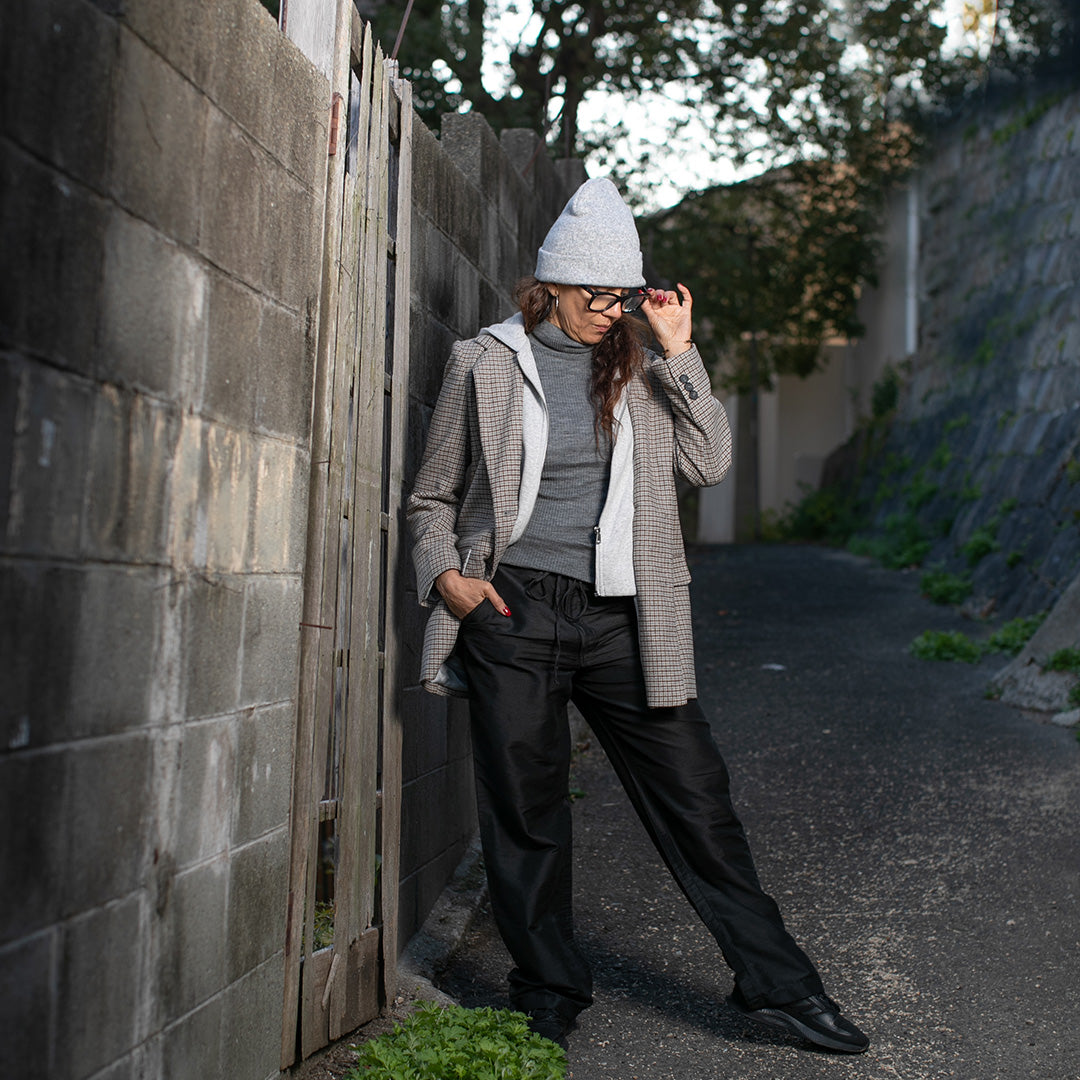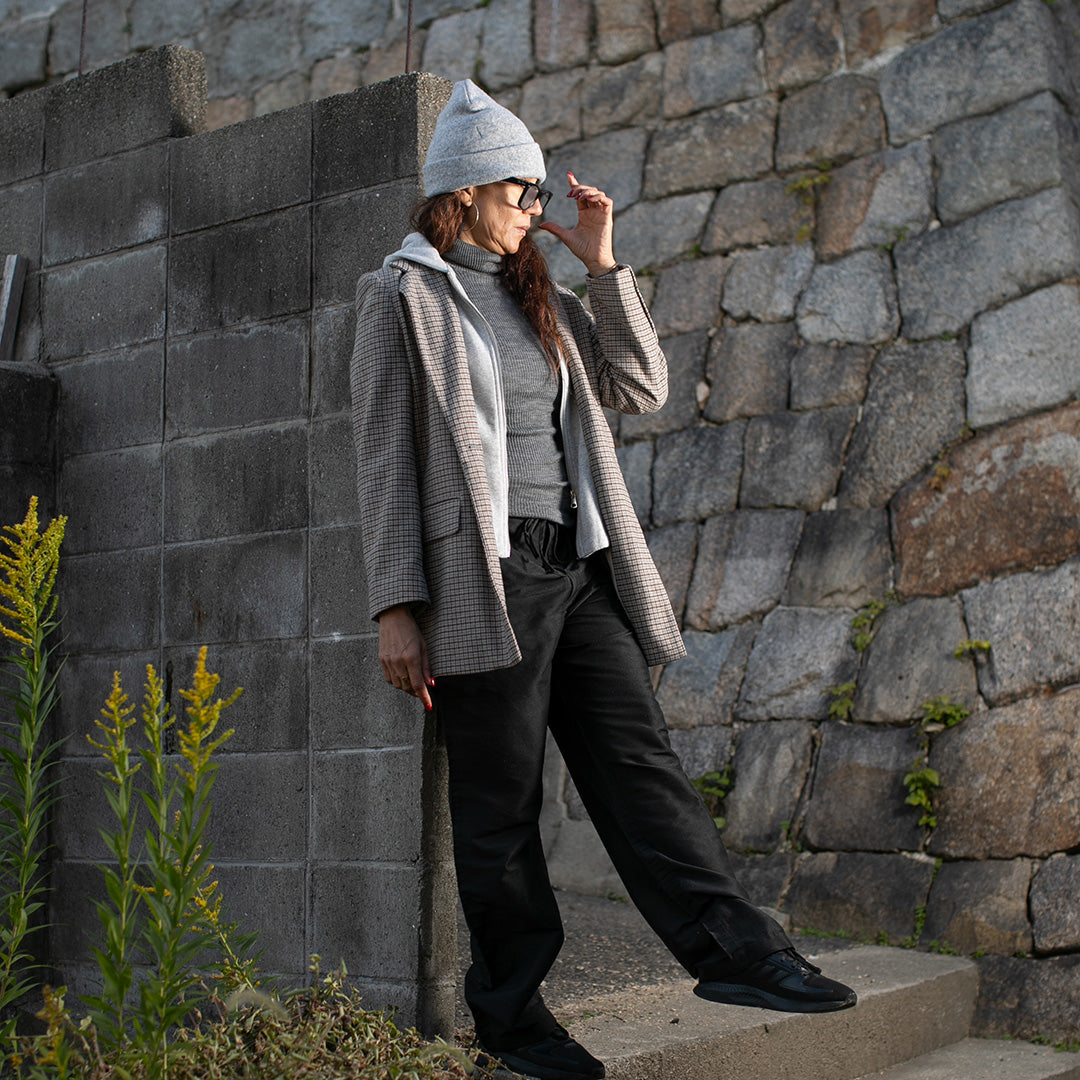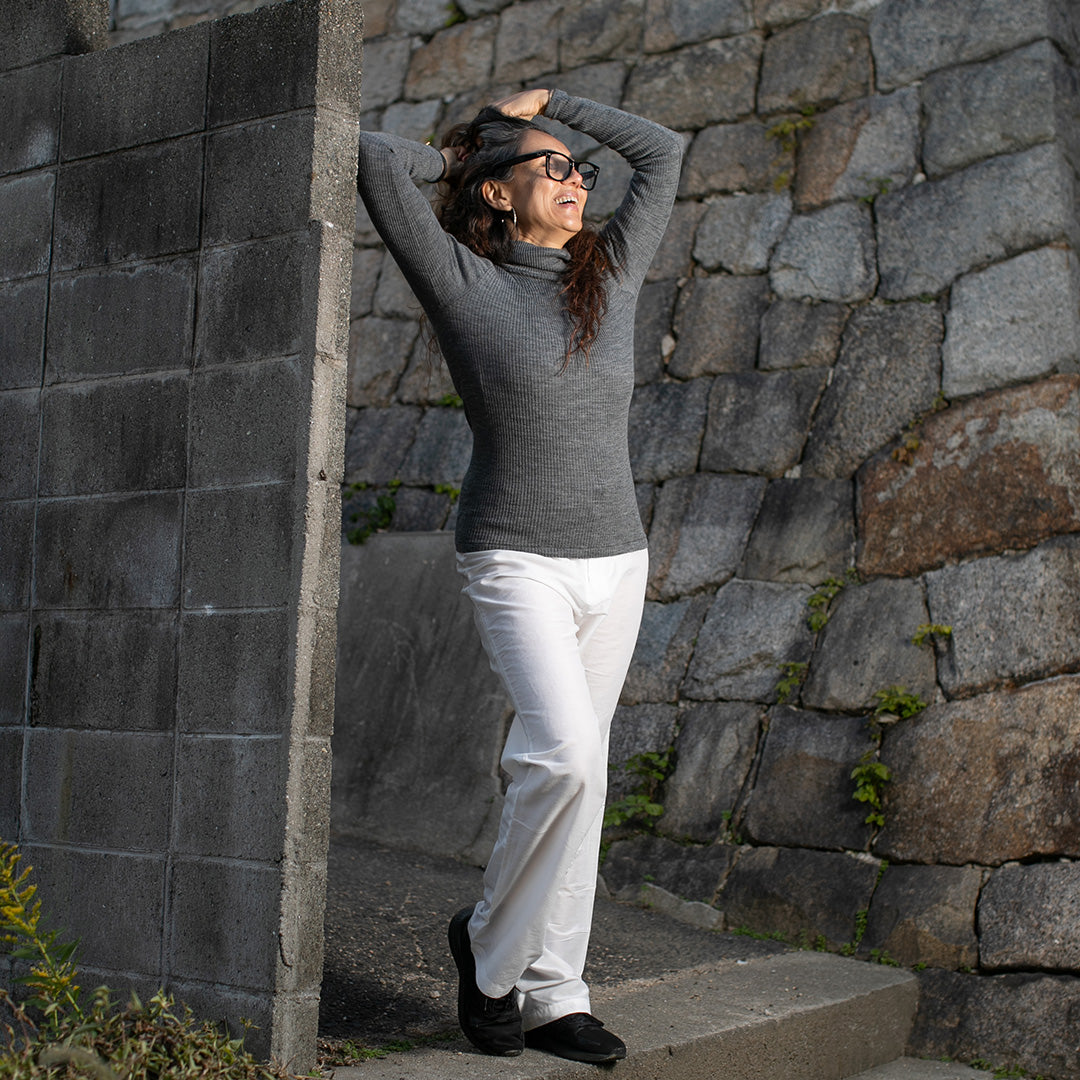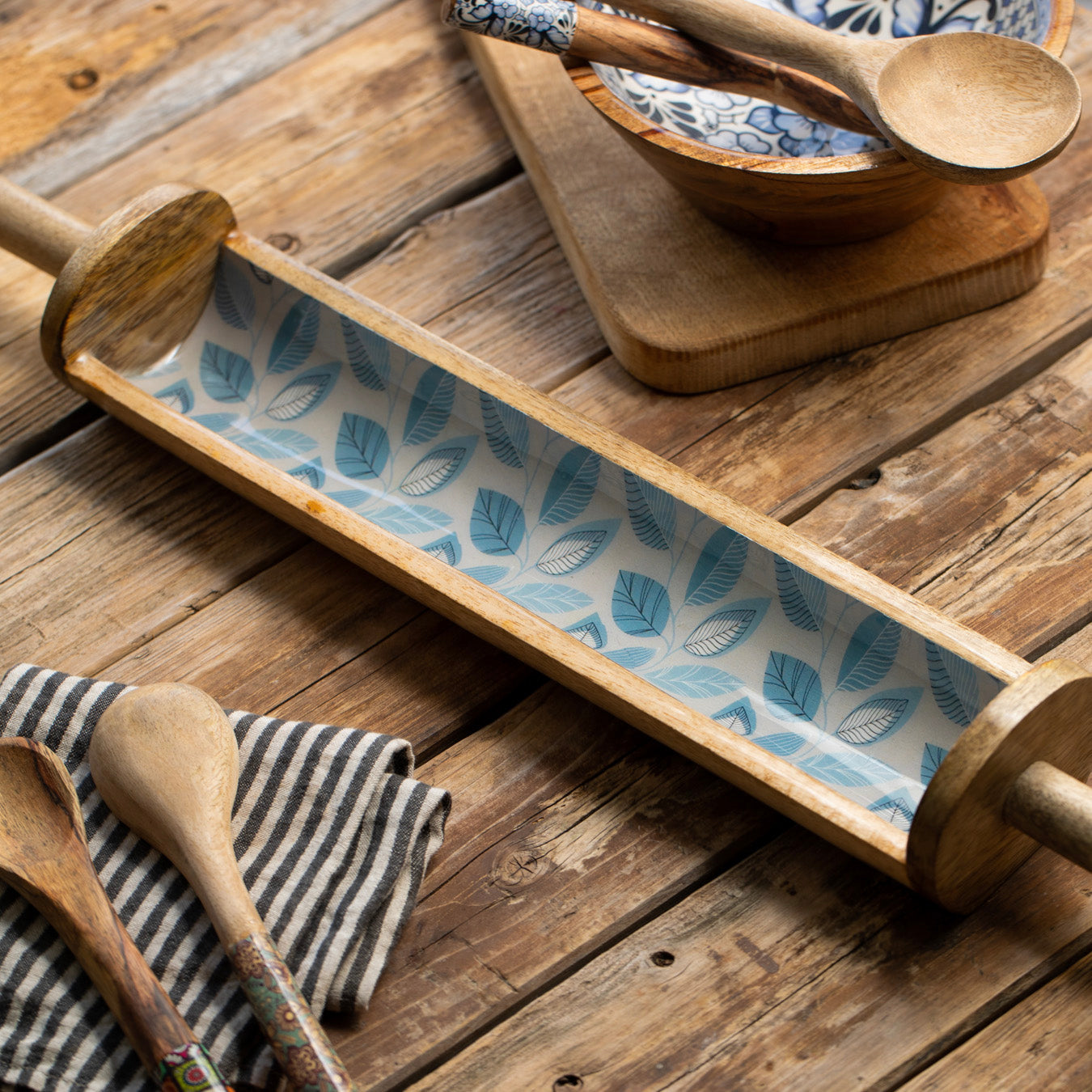インドは織物芸術の豊かな伝統を誇り、その中でも絞りや染めの技術は鮮やかな色と複雑なパターンで際立っています。さまざまな地域でバンダーニ、レヘリヤ、絞りとして知られるこれらの手法は大切にされ、世代を超えて受け継がれてきました。ここでは、インドの伝統的な絞りと染色技術の魅力的な世界を掘り下げ、その歴史、手法、文化的重要性を探ります。
歴史的背景
インドの絞り染めの技術は 5000 年以上前に遡り、その証拠はモヘンジョ ダロやハラッパの古代文明に見られます。歴史的に、これらの技術は主に王族やエリート向けの織物を作るために使用されていました。時間が経つにつれて、それらは社会のさまざまな層に浸透し、インドの文化的および繊維遺産に不可欠なものになりました。
1.バンダニ
バンダニはバンヘイとしても知られ、グジャラート州とラジャスタン州が発祥です。 「バンダニ」という用語は、「結ぶ」ことを意味するサンスクリット語の「bandh」に由来しています。この技法では、布地の小さな部分を糸で結び、それから染色します。縛った部分は染料に抵抗し、生地を解くと複雑な模様が現れます。
工程
- 準備: 布地 (通常は綿または絹) を洗浄し、漂白します。
- 結び方:細かい部分は糸でしっかりと結びます。パターンは単純なドットから複雑なデザインまで多岐にわたります。
- 染色:縛った生地を染料槽に浸します。異なる部分を順番に結び、染色することで、複数の色を実現できます。
- 乾燥とほぐし:染めた生地を乾燥させた後、ほぐして模様を現します。
主に使われる場面
バンダーニは、サリー、ターバン、ドゥパッタなどの伝統的な衣装によく使用されます。幸運をもたらすと信じられており、慶事の際に着用されます。
2.レヘリヤ
ラジャスタン語で「波」を意味するレヘリヤとは、生地に波のような模様を作り出す技法です。主にラジャスタン州で行われており、特にターバンやサリーで人気があります。
工程
-
巻き:生地を斜めに巻き、間隔をあけて結びます。
-
染色:丸めて縛った生地を、通常は単色で染めます。多色の模様の場合は、染色と乾燥の各ラウンドの後に、異なる色でこのプロセスを繰り返します。
- 乾燥とほぐし:生地を乾燥させてほどくと、波のような模様が現れます。
主に使われる場面
レヘリヤはモンスーンの季節を象徴し、伝統的に祭りやお祝いの際に着用されます。
3.絞り
「絞り」は日本の用語ですが、同様の防染技術がインド、特にマハーラーシュトラ州やタミル・ナードゥ州などで見られます。これらの技術には、染色前の生地の複雑な折り畳み、プリーツ加工、結合が含まれます。
工程
-
折り畳みと綴じ:布地をさまざまな方法で折り、綴じて、さまざまなパターンを作成します。
-
染色: 結合された生地が染色され、結合部分が染料に抵抗して模様が作成されます。
- 乾燥とほぐし:染色後、生地を乾燥させ、つなぎを外してデザインを現します。
主に使われる場面
絞り技術は、伝統的な手法と現代的な美学を融合させ、現代的なデザインを生み出すためによく使用されます。
文化的意義について
絞り染めのテキスタイルは単なる布地ではありません。それらは文化遺産と芸術性を形にしたものです。それぞれの作品には物語があり、職人のスキルと創造性が反映されています。鮮やかな色と複雑なパターンは、視覚的に魅力的なだけでなく、文化的、精神的な意味を持っています。たとえば、赤いバンダーニは花嫁によって着用されることが多く、繁栄と夫婦の至福を象徴しています。
現代への適応
近年、伝統的な絞り染めの技術が復活しており、デザイナーや職人が新しいパターンや色の組み合わせを試しています。現代の適応には、合成染料や革新的な結合技術の使用が含まれており、これらの古くからの慣行を現代のファッションに関連させています。
結論
バンダーニ、レヘリヤ、絞りなどのインドの伝統的な絞りや染めの技術は、この国の豊かな繊維遺産の証です。これらの手法は、独自のプロセスと文化的重要性を備えており、人々を魅了し、インスピレーションを与え続けています。最近、セレブたちはバンダーニやレハリヤをワードローブに取り入れており、これらの伝統的なテキスタイルの時代を超越した魅力と多用途性を誇示しています。伝統的な衣装であれ、現代のファッションであれ、インドのネクタイと染料の美しさと職人技は比類のないものであり続けます。
Tie and Dye - Traditional Indian Techniques
India boasts a rich heritage of textile arts, and among them, tie and dye techniques stand out for their vivid colors and intricate patterns. Known as Bandhani, Leheriya, and Shibori in various regions, these methods have been cherished and passed down through generations. Here, we delve into the fascinating world of traditional Indian tie and dye techniques, exploring their history, methods, and cultural significance.
Historical Background
Tie and dye techniques in India date back over 5,000 years, with evidence found in the ancient civilizations of Mohenjo-Daro and Harappa. Historically, these techniques were primarily used for creating textiles for royalty and the elite. Over time, they permeated various strata of society, becoming integral to India's cultural and textile heritage.
Major Techniques
1. Bandhani
Bandhani, also known as Bandhej, originates from the states of Gujarat and Rajasthan. The term "Bandhani" comes from the Sanskrit word "bandh," meaning to tie. This technique involves tying small sections of fabric with thread and then dyeing them. The tied areas resist the dye, creating intricate patterns when the fabric is untied.
Process:
- Preparation: The fabric, usually cotton or silk, is washed and bleached.
- Tying: Small sections are tied tightly with thread. The pattern can range from simple dots to complex designs.
- Dyeing: The tied fabric is dipped into dye vats. Multiple colors can be achieved by sequentially tying and dyeing different sections.
- Drying and Untying: The dyed fabric is dried and then untied to reveal the patterns.
Significance:
Bandhani is often used in traditional attire like sarees, turbans, and dupattas. It is believed to bring good luck and is worn during auspicious occasions.
2. Leheriya
Leheriya, meaning "wave" in Rajasthani, is a technique that creates wave-like patterns on the fabric. It is predominantly practiced in Rajasthan and is particularly popular for turbans and sarees.
Process:
- Rolling: The fabric is rolled diagonally and tied at intervals.
- Dyeing: The rolled and tied fabric is dyed, usually in a single color. For multi-colored patterns, the process is repeated with different colors after each round of dyeing and drying.
- Drying and Untying: The fabric is dried and untied, revealing the wave-like patterns.
Significance:
Leheriya symbolizes the monsoon season and is traditionally worn during festivals and celebrations.
3. Shibori
While Shibori is a Japanese term, similar resist dyeing techniques are found in India, especially in states like Maharashtra and Tamil Nadu. These techniques involve intricate folding, pleating, and binding of fabric before dyeing.
Process:
- Folding and Binding: The fabric is folded and bound in various ways to create different patterns.
- Dyeing: The bound fabric is dyed, with the bindings resisting the dye to create patterns.
- Drying and Untying: After dyeing, the fabric is dried and the bindings are removed to reveal the designs.
Significance:
Shibori techniques are often used to create contemporary designs, blending traditional methods with modern aesthetics.
Cultural Significance
Tie and dye textiles are more than just pieces of fabric; they are embodiments of cultural heritage and artistry. Each piece tells a story, reflecting the skills and creativity of the artisans. The vibrant colors and intricate patterns are not only visually appealing but also hold cultural and spiritual meanings. For instance, red Bandhani is often worn by brides, symbolizing prosperity and marital bliss.
Contemporary Adaptations
In recent years, traditional tie and dye techniques have seen a resurgence, with designers and artisans experimenting with new patterns and color combinations. Modern adaptations include using synthetic dyes and innovative binding techniques, making these age-old practices relevant in contemporary fashion.
Conclusion
Traditional Indian tie and dye techniques like Bandhani, Leheriya, and Shibori are a testament to the country's rich textile heritage. These methods, with their unique processes and cultural significance, continue to captivate and inspire. Recently, celebrities are incorporating Bandhani and Lehariya into their wardrobes, showcasing the timeless appeal and versatility of these traditional textiles. Whether used in traditional attire or modern fashion, the beauty and craftsmanship of Indian tie and dye remain unparalleled.



